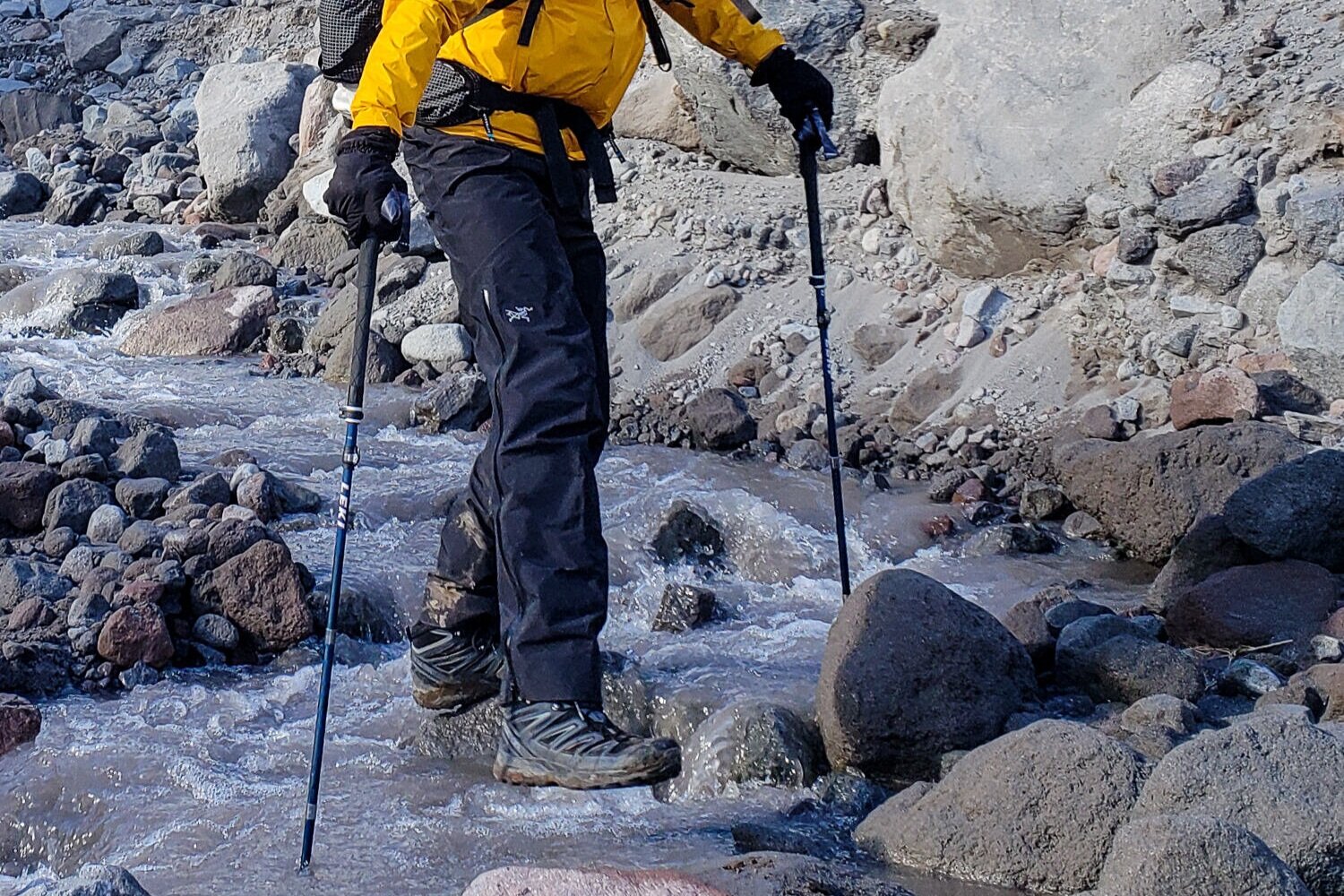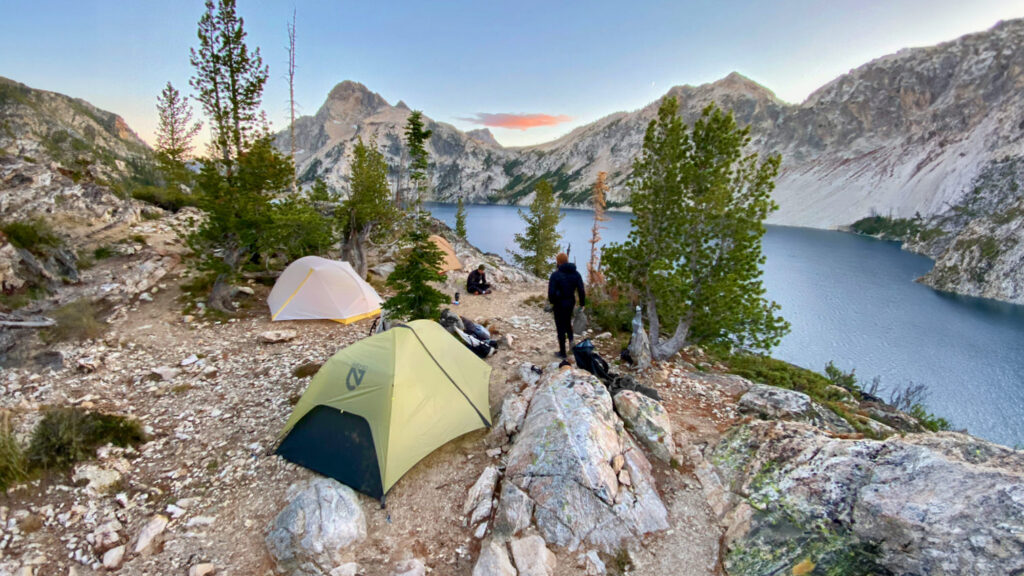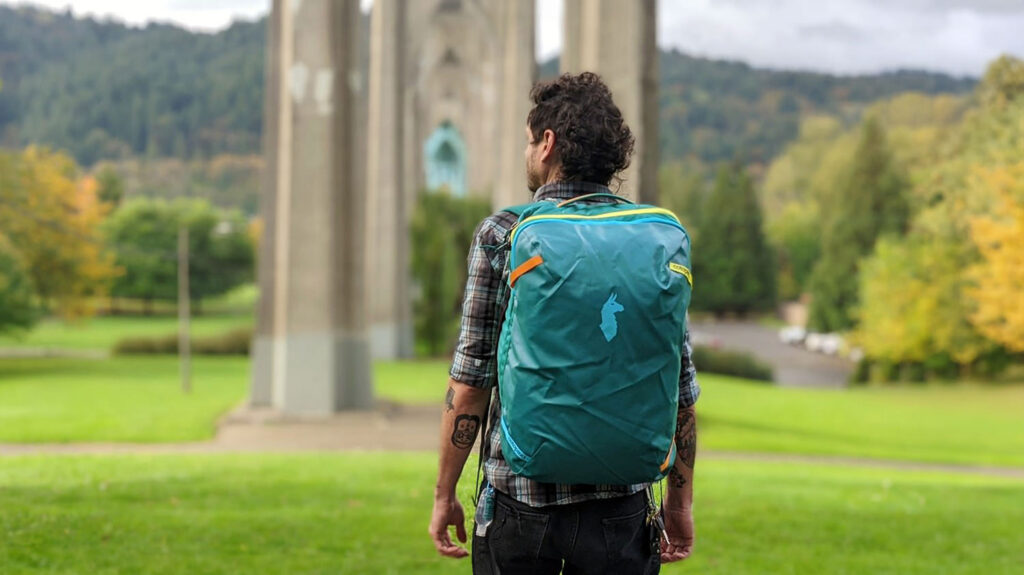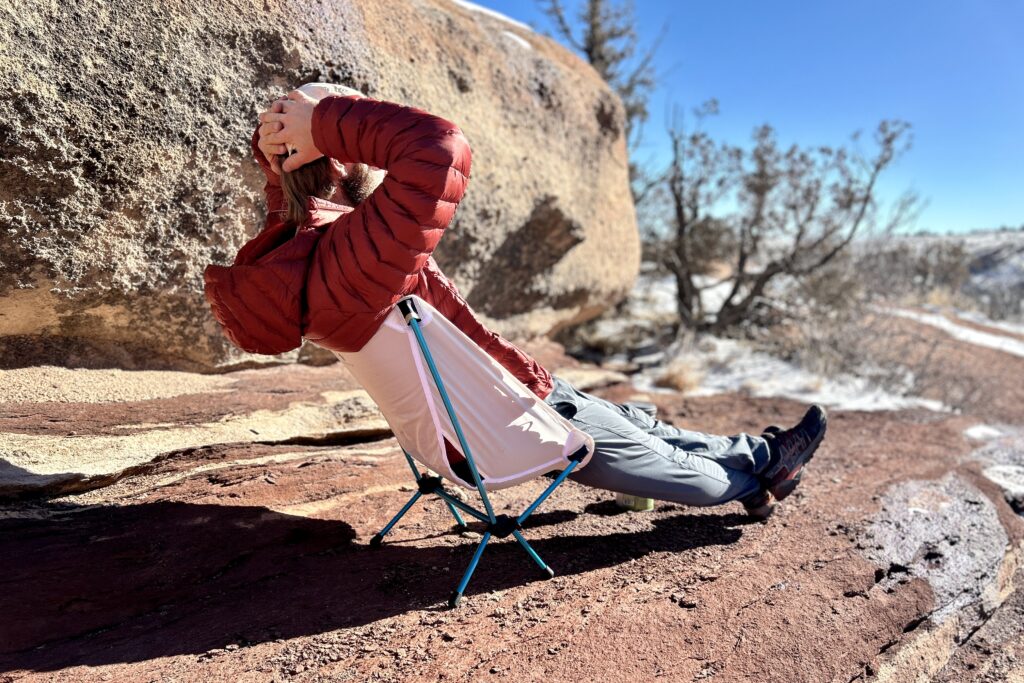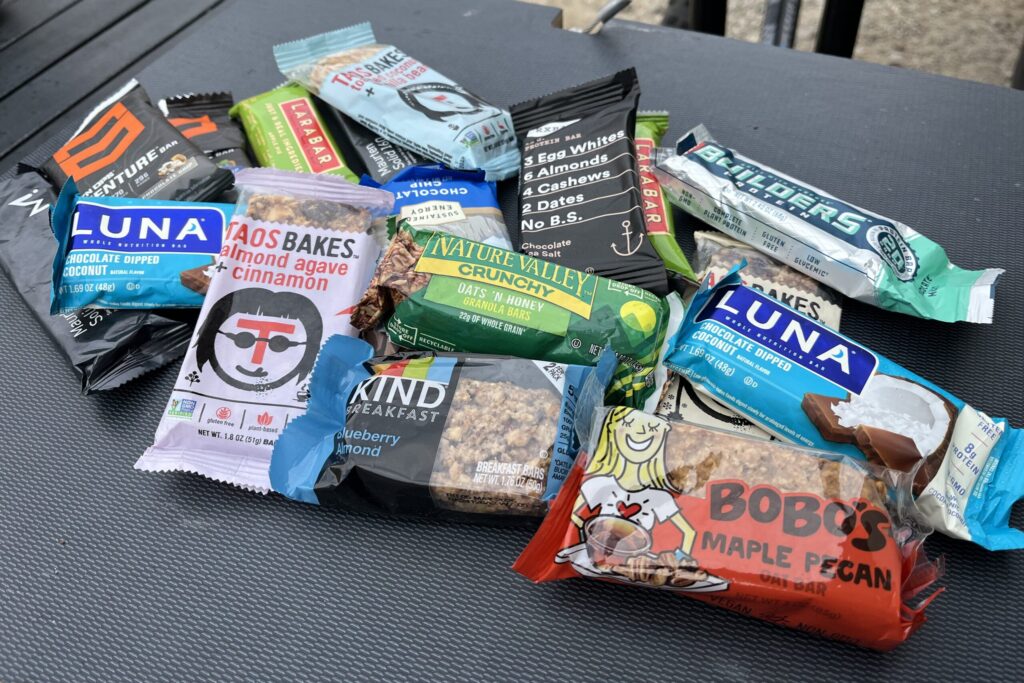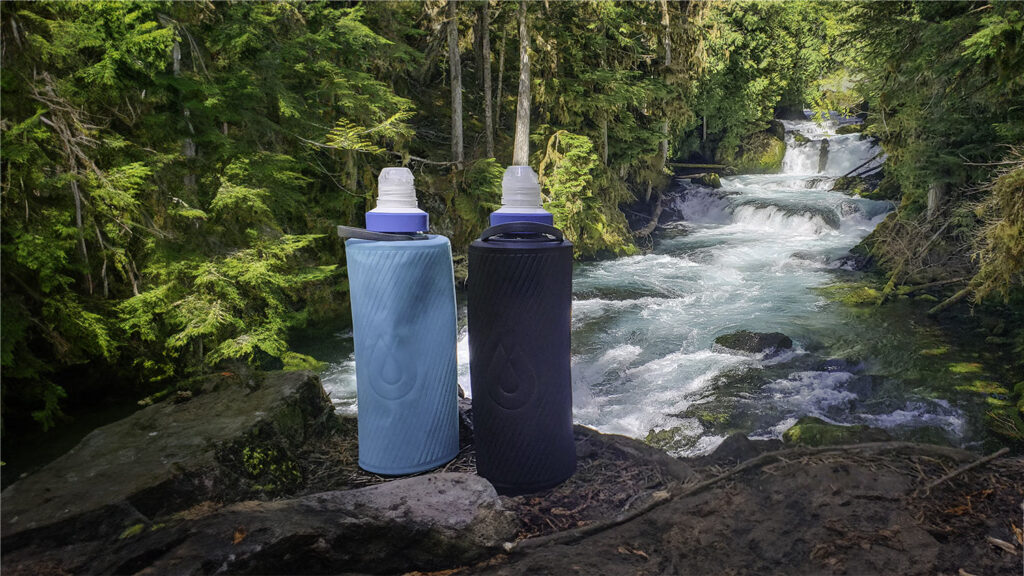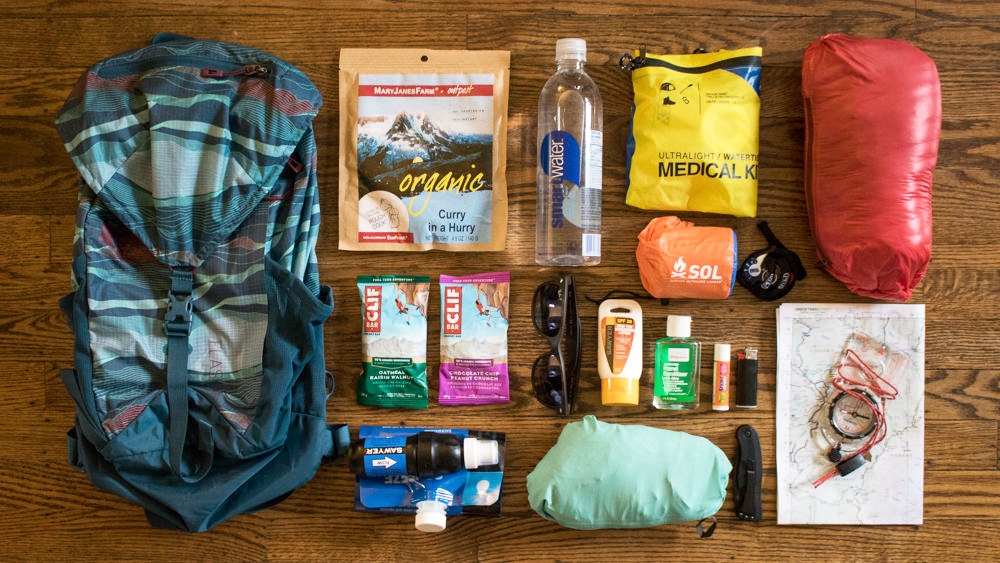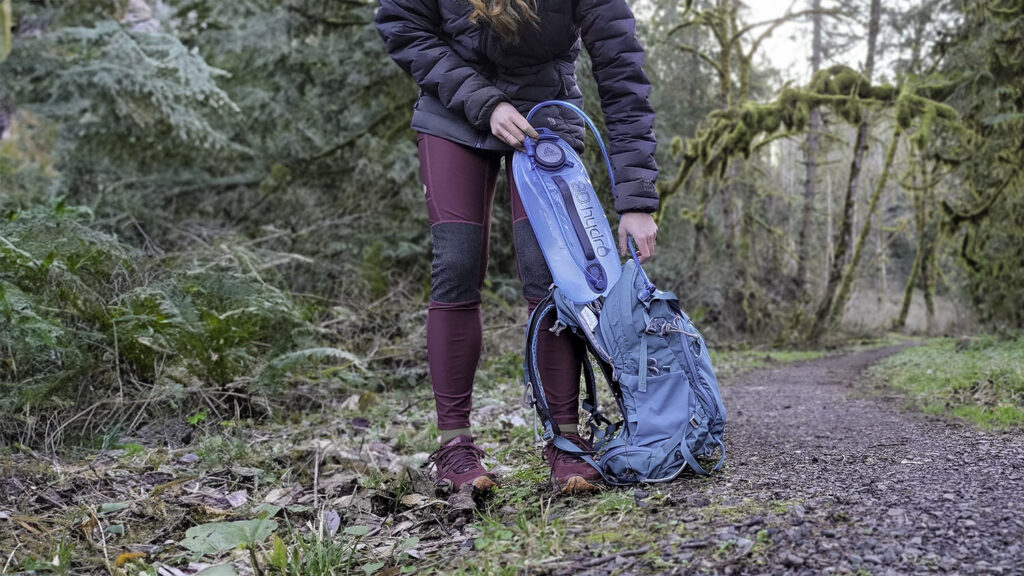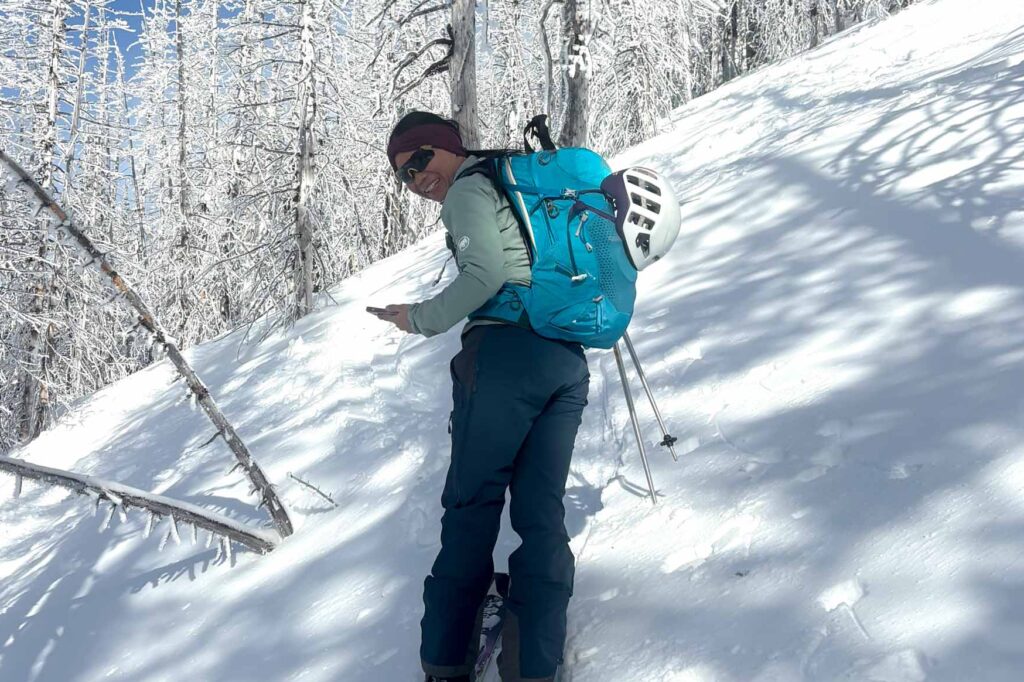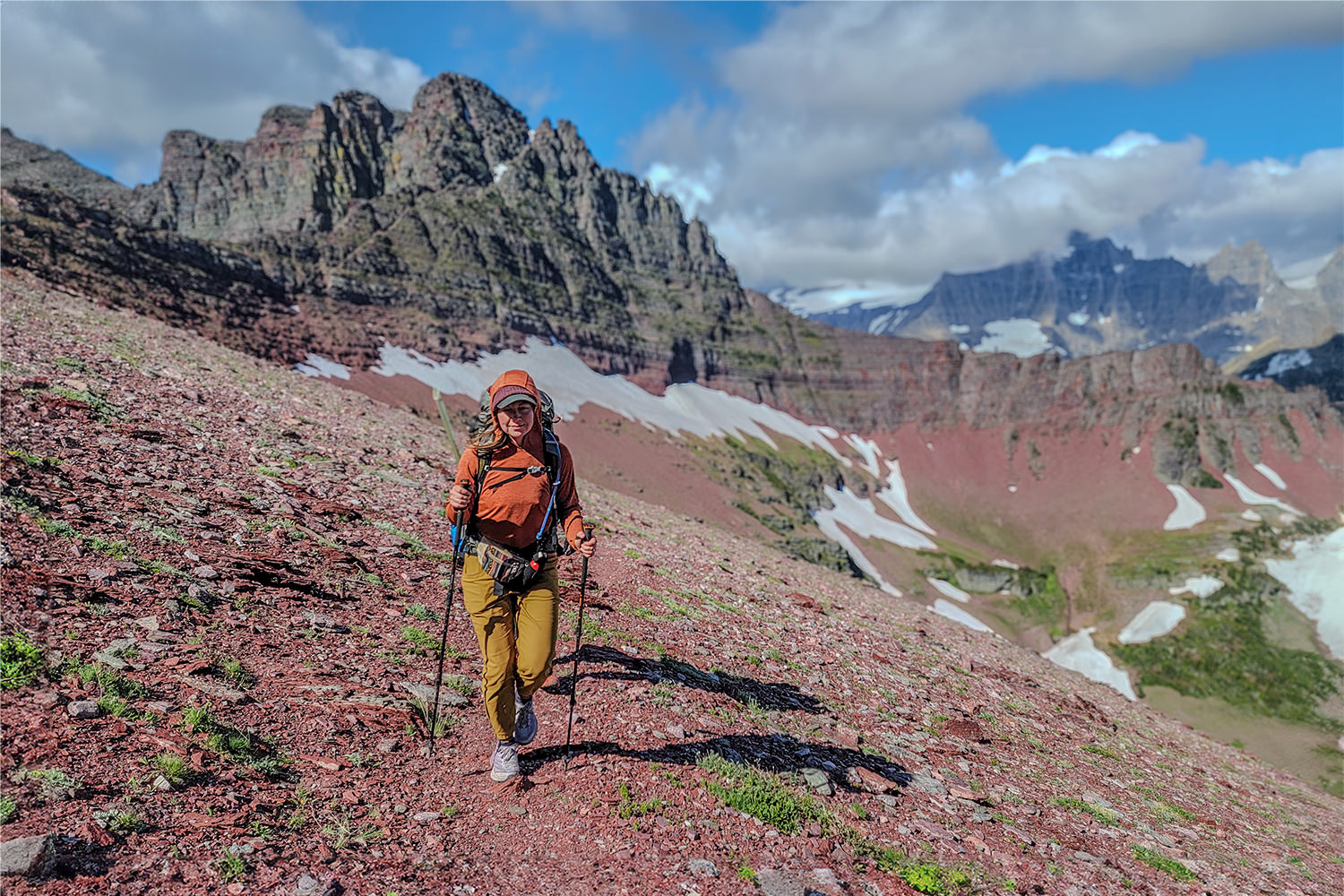
The best trekking poles are versatile pieces of gear, and not just for folks with bad knees or loose ankles. They increase stride efficiency, double as tent poles, or provide stability when snowshoeing and cross-country skiing.
Whatever you plan to use your trekking poles for, we found the 12 best models. We tested them for durability, weight, comfort, ease of use, packability, and features. We took them out into the field and used them while backpacking in the southwest and skiing in the San Juans. Finally, we used our 20,000 miles of combined thru-hiking experience to help us rank them and provide insights on the best pole for your situation.
And for more info, check out some of our other popular gear guides:
Quick Picks for TREKKING POLES
Check out this quick list of our favorites or continue scrolling to see our full list of the best trekking poles with in-depth reviews.
Best Trekking Poles Overall: Black Diamond Pursuit ($170)
Most Innovative Design: Durston Iceline ($169)
Best Ultralight Trail Running Poles: Black Diamond Distance Carbon FLZ ($220)
Best Folding Trekking Poles: LEKI Black Series FX Carbon ($250)
Most Durable Carbon Trekking Poles: Black Diamond Alpine Carbon Cork ($230)
Best Flick Locking Trekking Poles: MSR DynaLock Explore ($119)
Best Telescoping Poles: LEKI Makalu Cork Lite ($150)
Best Budget Buy Trekking Poles: Trekology Trek-Z 2.0 ($56)
Best Beginner Trekking Poles: Black Diamond Trail Back ($100)
Best Ultralight Trekking Poles: Gossamer Gear LT5 ($195)
Best Streamlined Design: REI Flash Carbon ($169)
Best Single Ultralight Trekking Pole: Zpacks Minimalist ($110)
What’s new
We brought in some new trekking poles and looked at the best in the field. After rigorously reviewing their performance capabilities, we’ve made some updates to our list:
- The Durston Iceline trekking poles arrived with a bang and earned our second-best ranking.
- Black Diamond released a new version of the Distance Carbon FLZ poles which quickly became one of our new favorites.
- The Trekology Trek-Z 2.0 became our new favorite budget buy thanks to its various features and affordable price tag.
Best Trekking Poles Overall Ranking
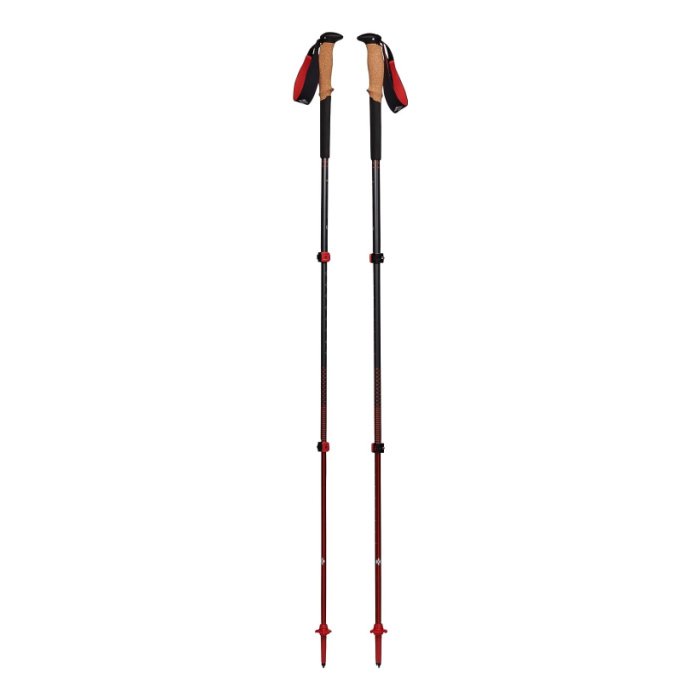
Black Diamond Pursuit
Best Trekking Poles Overall
CleverHiker Rating: 4.8/5.0
Price: $170
Weight (Pair): 1 lb. .4 oz.
Shaft Material: Aluminum
Grip Material: Cork
Collapsed Length: 24 in.
Pros
- Cork grips wick sweat
- Durable
- Lightweight
- Built-in adjustment tool
- Size options
- Small collapsed length
- Comes with two basket sizes
Cons
- Price
The Black Diamond Pursuit trekking poles offer an excellent combination of durability, versatility, and comfort, making them a great option for a wide variety of outdoor activities, including hiking, backpacking, and skiing.
We tested them in multiple environments, and they impressed us in almost every category. With an average price tag, these poles provide solid value for the performance they offer.
Weighing just over 16 ounces per pair, the Pursuit poles are relatively lightweight, especially for aluminum poles. They also feature a short collapsed length (24 inches for the small/medium size), making them easy to pack, whether you’re hiking, skiing, or traveling.
The cork grips are a standout feature, absorbing sweat and providing a secure, comfortable hold. The padded wrist straps are the most cushioned of all the trekking poles we tested, further enhancing overall comfort. These features, along with a well-designed grip curvature, make the Pursuit poles the most comfortable in our lineup.
Durability is another major strength of the Pursuit poles. They held up well during drop tests, skiing on mogul runs, and general field use, showing minimal wear or scratches. The poles performed well under the stress of downhill skiing, with no bending or breaking. This makes them a reliable choice for off-trail adventures, trekking pole tents, and winter sports.
The Pursuit poles are easy to use, with flick locks that offer precise adjustments and quick setup. They come with both summer and winter baskets, adding to their versatility across various activities. The extended grip is also a great feature for steep climbs, reducing the need for frequent height adjustments.
Though the Pursuit poles are slightly more expensive than some alternatives, their performance across multiple activities, durability, and comfort justify the investment. These poles are perfect for hikers, backpackers, and winter sport enthusiasts who want reliable, all-around trekking poles.
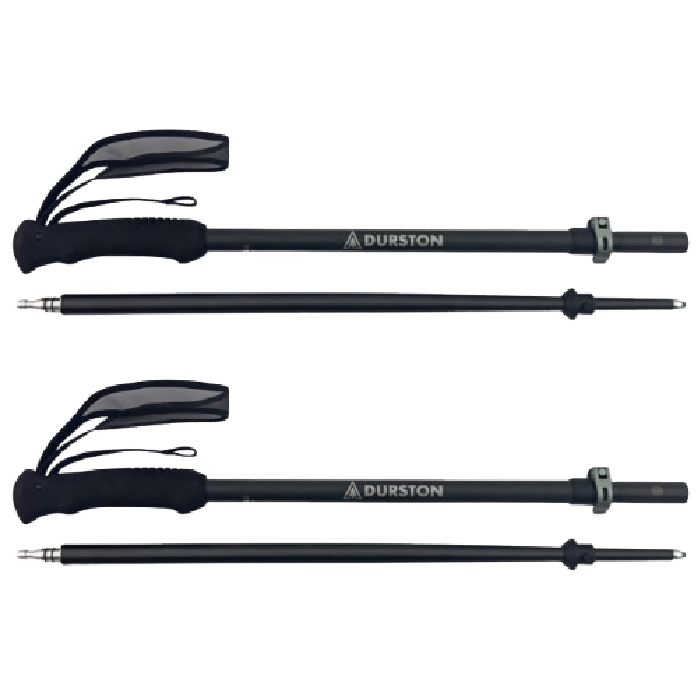
Durston Iceline Trekking Poles
Most Innovative Design
CleverHiker Rating: 4.7/5.0
Price: $170
Weight (Pair): 9.5 oz.(without straps)
Shaft Material: Carbon Fiber
Grip Material: Foam
Collapsed Length: 19.5 in.
Pros
- Ultralight
- Innovative design
- Durable for the weight
- Easy to set up
Cons
- Minimal features
- Wrist straps aren't as comfortable as others
The Durston Iceline trekking poles are a top choice for ultralight backpackers who prioritize weight savings and simplicity. Their innovative hybrid design combines folding and telescoping features, making them incredibly fast and easy to set up.
Weighing just 9.5 ounces per pair, these poles are among the lightest we tested, making them a standout option for anyone focused on reducing pack weight without sacrificing too much durability.
We tested the Iceline poles during a backpacking trip in Arizona’s Chiricahua Mountains, where they performed admirably in snowy conditions and dense brush. Despite their lightweight carbon fiber construction, these poles held up surprisingly well, with minimal bending or damage during tests, although they still remain more prone to snapping than metal poles. The hybrid design also contributed to their fast setup and ease of use, with a ball-and-socket joint and flick lock tensioner that made adjusting the pole length quick and simple.
The Iceline poles do have some drawbacks. Their minimalistic design, aimed at reducing weight, results in fewer comfort features. The foam grips, while lightweight, don’t absorb shock as effectively as cork grips, and they can become sweaty and dirty during long hikes.
The wrist straps are also thin and not as comfortable for extended use. Additionally, the Komperdell baskets can be difficult to attach, and they offer limited versatility compared to other trekking poles that come with multiple basket options for various conditions.
With a slightly above average price, the Iceline poles are an investment but offer great value for those committed to ultralight backpacking. They are ideal for well-maintained trails and lightweight hikes, though not the best choice for rock bashing or winter conditions. For ultralight enthusiasts, the Durston Iceline trekking poles are a solid option that balances weight, durability, and ease of use.
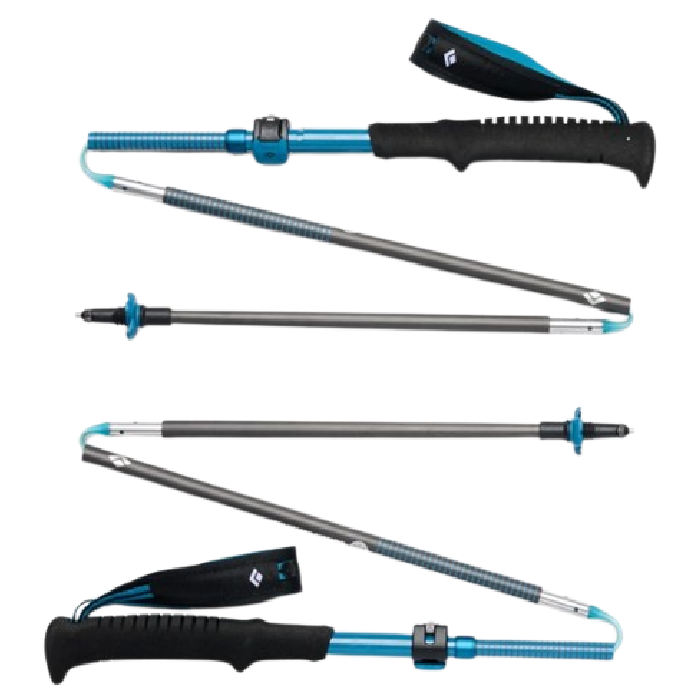
Black Diamond Distance Carbon FLZ
Best Trekking Poles for Trail Running
CleverHiker Rating: 4.6/5.0
Price: $220
Weight (Pair): 12 oz.
Shaft Material: Carbon Fiber
Grip Material: Foam
Collapsed Length: 14.25 in
Pros
- Packs down super small
- Lightweight
- Includes two sets of baskets
- Rubber tip covers included
Cons
- Price
- Grip diameter is smaller than most
The Black Diamond Distance Carbon FLZ Trekking Poles are ultra-light, compact, and durable, making them an excellent choice for ultralight backpackers and trail runners seeking reliable performance in rugged terrain. These poles are among the lightest and most compact models we tested, making them ideal for runners and hikers who prioritize minimal weight and space savings. They pack down incredibly small, fitting easily into a pack or trail running vest, which is a standout feature for long-distance hikers and those on the move.
In terms of performance, the Distance Carbon FLZ poles impressed us with their surprising durability, considering they are made from carbon fiber. They withstood rough terrain, rocky washes, and uneven footing in the Superstition Mountains of Arizona without showing signs of breakage. While they aren’t as indestructible as some aluminum models, they perform admirably for their weight. However, the smaller grip diameter and minimal padding on the wrist straps could make them less comfortable for those seeking extra comfort on long hikes.
Setting up the poles is a breeze, taking just six seconds to expand and lock into place. This quick setup, along with the folding design, makes them ideal for fast-paced activities like trail running. Despite their streamlined design, these products still include useful features such as two basket sizes and rubber tip covers, adding versatility for different conditions.
Although the Black Diamond Distance Carbon FLZ poles come with a higher price tag, their lightweight and compact design makes them a solid investment for those who value convenience and performance on the trail.
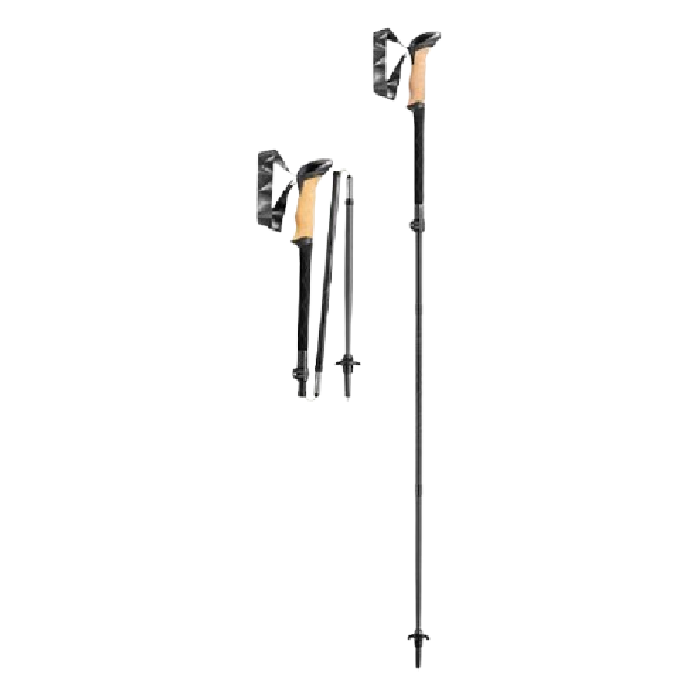
LEKI Black Series FX Carbon
Best Folding Trekking Poles
CleverHiker Rating: 4.6/5.0
Price: $270
Weight (Pair): 1 lb.
Shaft Material: Carbon Fiber
Grip Material: Cork
Collapsed Length: 16 in
Pros
- Durable for carbon fiber
- Comfortable cork grips
- Packs down small
- Usable grip extension
Cons
- Price
- A bit heavy for carbon fiber
- Takes practice to set up
The LEKI Black Series FX Carbon trekking poles offer a balanced performance across several categories, making them a solid choice for experienced hikers seeking a reliable pair of trekking poles.
These folding poles stand out for their durability, performing well under stress, especially considering their carbon fiber construction. In testing, they were able to withstand drops and bending without significant damage, which is a rare feat for carbon fiber poles.
Weighing 16 ounces for the pair, the Black Series poles are slightly heavier than average for carbon fiber, largely due to their cork grips and extended grip feature. While not ultralight, the cork grips provide comfort by absorbing moisture, and the poles have a grip extension for added versatility during varying terrain.
In terms of packability, the Black Series is compact but not the most packable folding option, ranking third in our comparison. The poles require some practice to set up due to their z-folding mechanism, which, while secure, is more complex than the typical flick lock or telescoping systems. However, once familiar with the setup, they are fairly easy to use.
These poles are packed with useful features, including baskets, replaceable tips, and a storage bag. They do lack snow baskets, which limits their use in winter conditions.
The Leki Black Series FX Carbon trekking poles are not cheap, and while they are excellent for those who value durability and performance, they may not be the best choice for beginners or those on a budget. If you’re looking for a versatile, durable folding pole for a variety of hiking conditions, these are a great option.
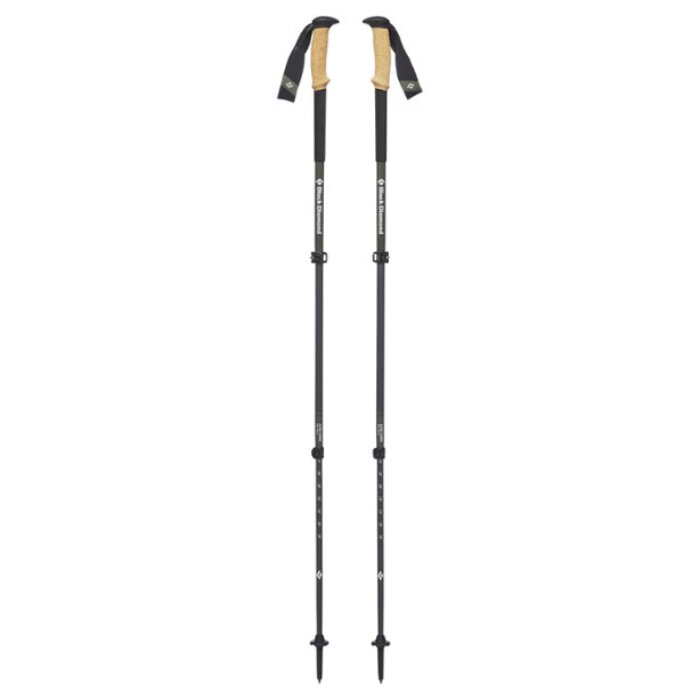
Black Diamond Alpine Carbon Cork
Most Durable Carbon Fiber Trekking Pole
CleverHiker Rating: 4.5/5.0
Price: $230
Weight (Pair): 1 lb. 1.1 oz.
Shaft Material: Carbon Fiber
Grip Material: Cork
Collapsed Length: 24 in.
Pros
- Structurally durable
- Comfy cork grips
- Grip extension
- Wide wrist straps
Cons
- Prone to cosmetic damage
- Heavier than other carbon poles
- Longer collapsed length
The Black Diamond Alpine Cork trekking poles are a solid mid-tier choice for hikers and backpackers seeking durability and comfort. Tested in Arizona’s Chiricahua Mountains, these poles performed well on rugged terrain, with excellent durability that rivals higher-end aluminum poles.
Their cork handles and wide wrist straps provided a comfortable grip during extended use. However, at 1 lb 1.1 oz, they’re heavier than other carbon fiber poles, making them less ideal for those prioritizing ultralight gear. While they are durable, their longer collapsed length (24 inches) makes them less packable compared to folding poles.
The poles include essential features like replaceable carbide tips, summer baskets, and grip extensions, but lack extras such as additional baskets or tip covers. Thanks to built-in tensioners, these poles are easy to adjust.
Despite the higher price tag, the Black Diamond Alpine Cork poles offer solid performance for trail hiking and moderate backpacking. They are best for those seeking durability and comfort on varied terrain without needing ultralight packing or extensive extra features.
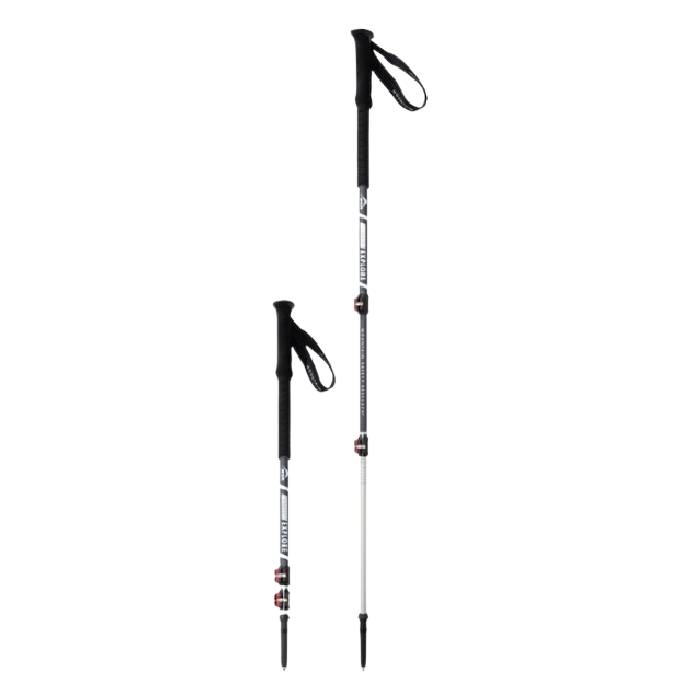
MSR DynaLock Explore
Best Flick Locking Trekking Poles
CleverHiker Rating: 4.5/5.0
Price: $119
Weight (Pair): 1 lb. 3 oz.
Shaft Material: Aluminum
Grip Material: Foam
Collapsed Length: 24.5 in
Pros
- Padded wrist straps
- Comes with winter baskets
- Built in tensioners
Cons
- Heavy
- Long collapsed length
The MSR DynaLock Explore trekking poles are a well-rounded option for those seeking versatility in their gear. We tested them while backpacking through Arizona’s Chiricahua Mountains, where they performed reliably on varied terrain, including snowy paths and thick brush. The poles are a good choice for those looking to use trekking poles year-round, as they come with both summer and winter baskets. This makes them suitable for different conditions, such as hiking and snowshoeing.
Because the poles are made from aluminum, they are heavier than some other models, weighing in at 1 lb 3 oz per pair. This makes them feel a bit bulky in hand, though they’re not overly cumbersome on the trail. The weight is noticeable, especially when compared to carbon fiber poles, but the performance does not suffer significantly. The collapsed length of 24.5 inches is average, meaning they’re not the most compact option when packing them.
Comfort-wise, the MSR DynaLock Explore poles feature padded wrist straps and ergonomic foam grips, which contribute to a comfortable experience over long hikes. The foam grips, however, tend to get slick with sweat, which is a downside compared to cork grips. The poles are easy to use thanks to their flick locks, though the shafts can feel sticky when adjusting, requiring extra effort to extend or collapse them. However, the tensioners on the locks are a nice touch, though somewhat clumsy to adjust.
The MSR DynaLock Explore poles offer great value for the price thanks to their moderate price. Their durability, comfort, and versatile features, like replaceable carbide tips and dual baskets, make them a solid choice for hikers and backpackers who need a dependable, all-season pole, despite their heavier weight.
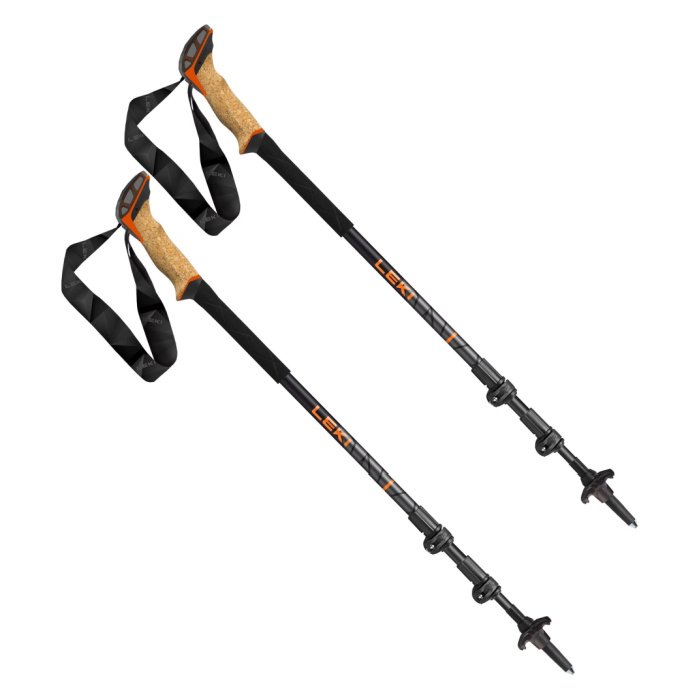
LEKI Makalu Cork Lite
Easiest Telescoping Poles
CleverHiker Rating: 4.4/5.0
Price: $150
Weight (Pair): 1 lb. 2 oz.
Shaft Material: Aluminum
Grip Material: Cork
Collapsed Length: 26 in.
Pros
- Great value
- Very durable
- Comfy cork grips
- No tools required for adjusting locks
Cons
- Long collapsed length
- A bit heavy
The Leki Makalu Cork Lite trekking poles are a solid mid-tier option designed for hiking and backpacking. They offer a balance of durability, comfort, and ease of use without being overly specialized in any one area. We tested these poles on day hikes in Durango, Colorado, where they performed well in various conditions.
We like Makalu Cork Lite poles for their durability, withstanding normal wear and tear of life on the trail. They feature comfortable cork grips, which help absorb moisture, keeping your hands dry and clean over long hikes. These poles also have easy-to-use flick locks with adjustable tension, allowing for simple height adjustments without tools. The cork handles are a standout feature for comfort, and the overall design is reliable for regular use. We also appreciate the inclusion of a grip extension and replaceable carbide tips.
While the Makalu poles offer solid performance, we poked and prodded to find a few drawbacks. Their collapsed length of 26 inches is longer than other trekking poles we tested, which may be inconvenient for packing or traveling. The weight, while typical for aluminum poles, is a bit on the heavier side compared to carbon fiber models, making them less ideal for those looking for ultralight gear. Additionally, while the wrist straps work well, they lack padding, which can be uncomfortable on longer treks.
With a mid-range price tag, the Makalu Cork Lite trekking poles offer excellent value for those seeking a durable and comfortable hiking pole. They perform well across most categories, making them a dependable choice for average hikers and backpackers. However, they may not be the best option for those seeking ultralight or highly specialized gear.
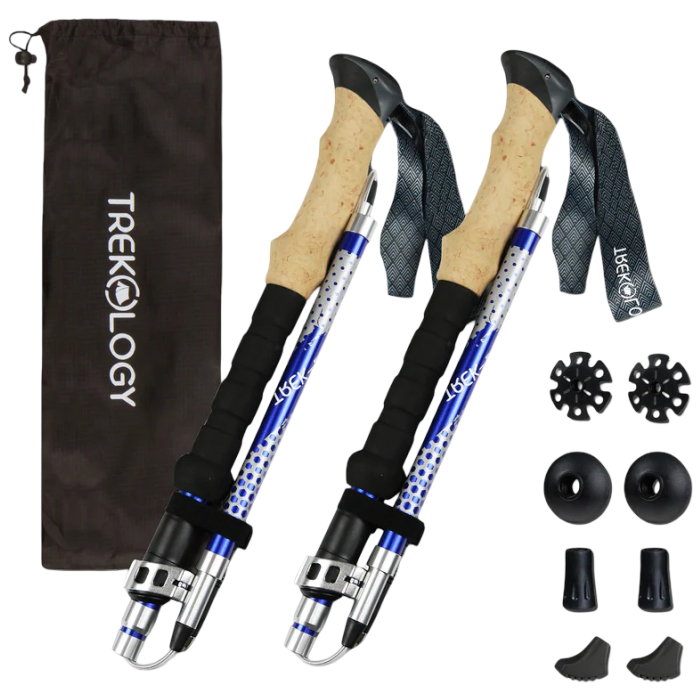
Trekology Trek-Z 2.0
Best Budget Buy
CleverHiker Rating: 4.4/5.0
Price: $56
Weight (Pair): 1 lb. 3 oz.
Shaft Material: Aluminum
Grip Material: Foam
Collapsed Length: 15 in. (sm)
Pros
- Price
- Comes with winter baskets
- Includes two types of tip covers
- Compact when collapsed
Cons
- Heavy
- Not easy to set up
The Trekology Trek-Z 2.0 trekking poles offer a solid, budget-friendly option for beginner hikers or those looking for a reliable and affordable set of trekking poles.
Weighing in at 1 lb 3 oz per pair, these aluminum poles are heavier than most models tested, but the price reflects this trade-off. While they aren’t the most durable poles, they offer good value with additional features, including winter baskets, two types of tip covers, and a compact collapsed length of just 15 inches. These features make them a versatile option for various terrains and weather conditions.
Because of their affordability, the Trek-Z poles are not the easiest to set up. The folding design requires some coordination and time to assemble, and while the flick locks are functional, the poles take longer to adjust compared to other models we tested. Additionally, the foam grips lack the breathability of cork, and the wrist straps are basic, impacting comfort on longer hikes.
Other than that, these poles are incredibly packable and can fit easily into a daypack. They perform adequately for short to moderate day hikes, as we saw during testing in Colorado’s San Juan National Forest. However, their weight and setup time make them less ideal for long-distance backpacking or more technical use.
Overall, the Trekology Trek-Z 2.0 trekking poles are a great choice for casual hikers or those on a budget. They offer good features and solid performance for day hikes, but are not recommended for more strenuous or extended hiking trips.
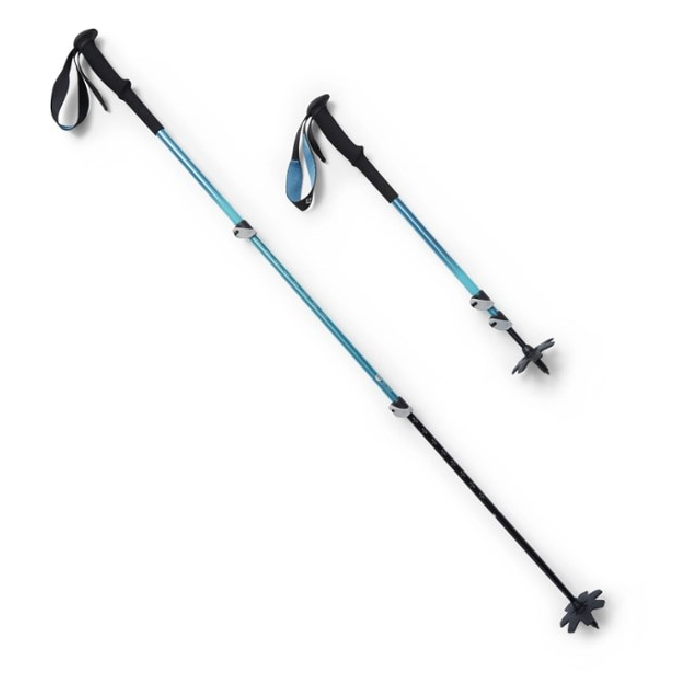
Black Diamond Trail Back
Best Basic Trekking Pole
CleverHiker Rating: 4.3/5.0
Price: $100
Weight (Pair): 1 lb. 2.8 oz.
Shaft Material: Aluminium
Grip Material: Foam
Collapsed Length: 24 in.
Pros
- Price
- Durable
- Versatile
- Included winter baskets
Cons
- Heavy
- Long collapsed length
The Black Diamond Trail Back trekking poles offer great value for those seeking affordable, durable, and versatile poles without extra frills. Tested in various conditions, including downhill skiing on mogul runs in Colorado and hiking, these poles proved to be incredibly durable.
They withstood bumps, drops, and pressure without significant signs of damage, making them a solid choice for both summer and winter activities, such as hiking and snowshoeing. The aluminum construction ensures these poles hold up to tough conditions, with the included winter baskets enhancing their versatility.
While durability is a standout feature, the Trail Back poles have some drawbacks. At 9.7 ounces per pole, they are heavier than many other models, which may be a concern for those looking to shave every possible ounce. Additionally, the poles have one of the longest collapsed lengths in their class.. The flick locks are secure but can be tricky to adjust due to their small size and limited surface area.
Comfort-wise, the foam grips and wrist straps are functional, but not as high-end as those of other models. The wrist straps have a fabric liner, which adds some comfort, but the foam grips tend to get sweaty and dirty quickly. The poles also feature an extension grip for climbing, though it’s shorter compared to other models.
Despite these drawbacks, the Trail Back poles are an excellent choice for beginner hikers or those on a budget. They perform well in durability tests, are versatile enough for different activities, and are much more affordable than most poles on the market. If you don’t need the latest features or a super lightweight design, these poles offer great value and reliability for various outdoor adventures.

Gossamer Gear LT5
Best Ultralight Trekking Poles
CleverHiker Rating: 4.2/5.0
Price: $195
Weight (Pair): 9.8 oz.
Shaft Material: Carbon Fiber
Grip Material: Foam
Collapsed Length: 23.5 in.
Pros
- Ultralight
- Comfy handles
- Very durable for the weight
- Sections are replaceable
Cons
- Price
- Twist locks take time to use
The Gossamer Gear LT5 trekking poles are an excellent choice for ultralight backpackers seeking minimal weight without sacrificing essential performance. These poles are made from carbon fiber, keeping them incredibly light at just 9.8 ounces for the pair.
The poles are equipped with twist locks, which, while not the most user-friendly or fast, allow for easy adjustment of the pole length. They also feature EVA foam handles, which provide decent comfort but lack the moisture-wicking and shock-absorbing qualities of cork. These features are intentionally pared down to reduce weight, making them ideal for fast-packing or long-distance hikers.
Where the LT5s shine is in their weight. Weighing just 5.3 ounces per pole, they’re some of the lightest poles we’ve tested, offering an excellent balance of function and minimalism. The poles performed well in southern Arizona’s Chiricahua Mountains, which included off-trail washes and rugged, uneven terrain.
While they held up better than expected during this field test, they are not built to withstand heavy impact. In our durability tests, the poles showed slight cosmetic damage after being thrown and dropped. They also bent easily during the pressure tests, indicating they are more fragile than some competitors, especially under stress.
The LT5 trekking poles are best suited for hikers who prioritize weight over rugged durability or added features. They are lightweight, adjustable, and comfortable for short to medium hikes, but their carbon fiber build makes them less reliable in extremely tough conditions.
There’s no getting around it, these sticks are premium priced. So if uber-ultralight isn’t your top priority, other poles may offer better value. Overall, the LT5 is perfect for those seeking minimal weight for hikes on well-maintained trails.
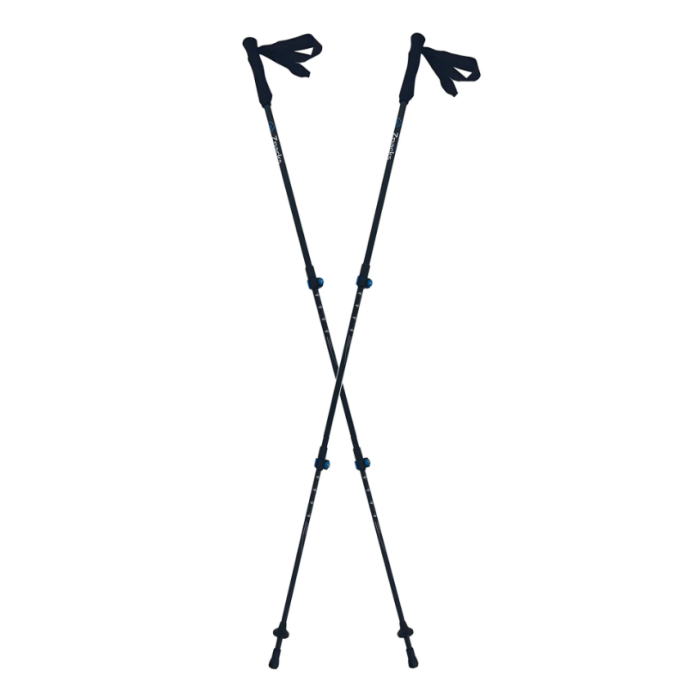
Zpacks Minimalist
Best Budget Ultralight Trekking Poles
CleverHiker Rating: 4.1/5.0
Price: $110
Weight (Pair): 11.7 oz.
Shaft Material: Carbon Fiber
Grip Material: Foam
Collapsed Length: 24.25 in.
Pros
- Affordable
- Ultralight
- Sections are replaceable
Cons
- Not as durable
- Longer collapsed length
- Grips are a bit less comfortable
The Zpacks Minimalist trekking poles are a highly affordable ultralight option, ideal for budget-conscious hikers looking to minimize weight on their trips. With inexpensive price tags for either a single pole or for a pair, they stand out as the lightest in the lineup, weighing just 5.7 ounces per pole. This makes them an excellent choice for ultralight backpacking trips or those who prioritize weight savings over added features.
These poles were tested on the Durango, Colorado trail system and were particularly appreciated for their light weight and ease of use. They feature a simple, telescoping design with flick locks that are easy to adjust and come with measurements on the shafts, making it simple to set the right height. At 24.25 inches when collapsed, they are fairly packable, though not the smallest option in the lineup.
However, there are trade-offs. Durability is a major concern with the Zpacks Minimalist poles. While they performed decently in drop and throw tests, they felt fragile during the bend test and could snap under heavier pressure. They lack comfort features such as padded wrist straps or cork handles, which are standard in other poles. The foam grips are functional but less comfortable over long distances, and the wrist straps are basic, lacking extra padding.
In terms of value, the Zpacks Minimalist poles are a great choice for ultralight hikers seeking a budget-friendly and lightweight option. They offer solid performance for the price but may not be the best fit for more rugged hikes or those requiring higher durability. If you prioritize weight over comfort and durability, these poles are a solid pick for lightweight and fast-paced adventures.

REI Flash Carbon
Best Streamlined Design
CleverHiker Rating: 4.1/5.0
Price: $169
Weight (Pair): 13.6 oz.
Shaft Material: Carbon Fiber
Grip Material: Foam
Collapsed Length: 25 in.
Pros
- Good value
- Lightweight
- Streamlined design
Cons
- Longer collapsed length
- Hard to extend poles
The REI Flash Carbon trekking poles are an excellent option for the average hiker seeking a lightweight and straightforward trekking pole. Weighing only 13.6 oz per pair, these poles are lighter than most, thanks to their carbon fiber shafts.
While the poles did feel somewhat prone to snapping under heavy stress, they held up well in testing, including a fall from a tester and use on a rugged off-trail hike through Arizona’s Chiricahua Mountains. Despite some durability concerns, they performed adequately in the field, showing no damage even in challenging conditions.
One of the primary drawbacks of the REI Flash Carbon poles is the difficulty in adjusting the telescoping shafts. The friction between the sections makes them hard to expand and collapse, a significant issue when it comes to ease of use. Adding some chapstick, Vaseline, or Carmex helps while you’re in the backcountry.
The lack of measurements on the shafts also adds frustration when trying to set the correct height. These poles also have a longer collapsed length (25 inches), which can be cumbersome for packability.
In terms of features, the REI Flash Carbon poles are fairly basic. While they come with padded wrist straps and summer baskets, they lack more advanced features like replaceable carbide tips and grip extensions. This results in a shorter overall lifespan compared to poles with more robust features.
Despite these cons, the Flash Carbon trekking poles offer good value for those seeking a no-frills, lightweight pole for day hikes and weekend backpacking trips. They provide solid performance without being overly complex or expensive, making them a practical option for casual outdoor enthusiasts. However, those in need of more durability or extra features might want to keep shopping.
Product Comparison Table
| oSort | Product | Price | Weight (Pair) | Shaft Material | Grip Material | Collapsed Length | Durability | Weight Score | Comfort | Ease of Use | Packability | Features | 0 |
Black Diamond Pursuit View at REI View at Amazon |
$170 | 1 lb. .4 oz. | Aluminum | Cork | 24 in. | 4.8 | 4.0 | 5.0 | 4.2 | 4.0 | 4.5 | 1 |
Durston Iceline Trekking Poles View at Durston Gear |
$170 | 9.5 oz. (without straps) | Carbon Fiber | Foam | 19.5 in. | 4.0 | 4.9 | 3.7 | 5.0 | 4.5 | 3.9 | 2 |
Black Diamond Distance Carbon FLZ View at REI View at Amazon |
$220 | 12 oz. | Carbon Fiber | Foam | 14.25 in | 3.8 | 4.6 | 3.7 | 4.8 | 5.0 | 4.2 | 3 |
LEKI Black Series FX Carbon View at REI View at Amazon |
$270 | 1 lb. | Carbon Fiber | Cork | 16 in | 4.5 | 4.1 | 4.0 | 4.0 | 4.7 | 4.6 | 4 |
Black Diamond Alpine Carbon Cork View at REI View at Amazon |
$230 | 1 lb. 1.1 oz. | Carbon Fiber | Cork | 24 in. | 4.7 | 3.9 | 4.4 | 3.8 | 3.7 | 3.9 | 5 |
MSR DynaLock Explore View at REI View at Amazon |
$119 | 1 lb. 3 oz. | Aluminum | Foam | 24.5 in | 4.2 | 3.8 | 4.0 | 4.0 | 3.9 | 4.5 | 6 |
LEKI Makalu Cork Lite View at REI View at Amazon |
$150 | 1 lb. 2 oz. | Aluminum | Cork | 26 in. | 4.4 | 3.9 | 4.0 | 4.5 | 3.4 | 4.2 | 7 |
Trekology Trek-Z 2.0 View at Trekology View at Amazon |
$56 | 1 lb. 3 oz. | Aluminum | Foam | 15 in. (sm) | 3.9 | 3.6 | 3.7 | 3.4 | 4.9 | 4.8 | 8 |
Black Diamond Trail Back View at REI View at Amazon |
$100 | 1 lb. 2.8 oz. | Aluminium | Foam | 24 in. | 4.8 | 3.8 | 4.0 | 3.5 | 3.5 | 4.2 | 9 |
Gossamer Gear LT5 View at Gossamer Gear View at Garage Grown Gear |
$195 | 9.8 oz. | Carbon Fiber | Foam | 23.5 in. | 3.4 | 5.0 | 3.7 | 3.0 | 4.0 | 4.2 | 10 |
Zpacks Minimalist View at Zpacks |
$110 | 11.7 oz. | Carbon Fiber | Foam | 24.25 in. | 3.0 | 4.8 | 3.2 | 4.0 | 3.8 | 4.2 | 11 |
REI Flash Carbon View at REI |
$169 | 13.6 oz. | Carbon Fiber | Foam | 25 in. | 3.6 | 4.3 | 4.0 | 3.4 | 3.8 | 3.7 |
|---|
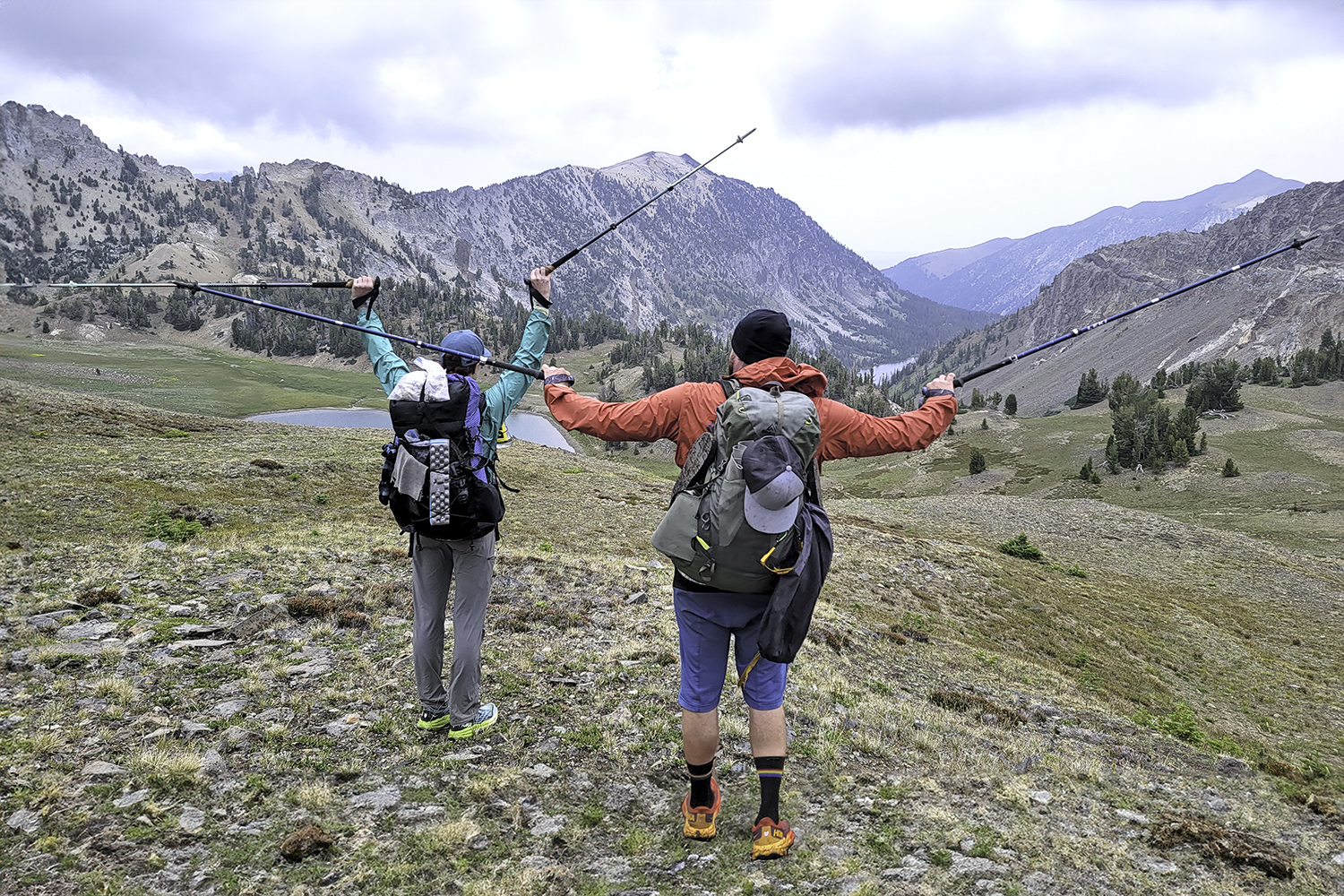
How We Test
Durability
Durability is essential for various reasons, including those who rely on their poles for stability in uneven terrain, use them to pitch their shelter, or for crossing swift rivers.
We tested the durability of each model by putting it through several different trials. In the first assessment, we threw each trekking pole approximately 10 feet, like a javelin. Afterward, we dropped every pole onto a large boulder. Might sound crazy, but we’ve had some gnarly crashes while sliding down scree fields and boulder hopping.
Finally, we planted each pole in the ground and leaned on them. We don’t actually want to break any poles, so we noted which poles seemed likely to be very easy to break and which would be very difficult to snap. This test was the primary basis for our ranking system. However, we also used the degree of cosmetic damage to help with rankings.
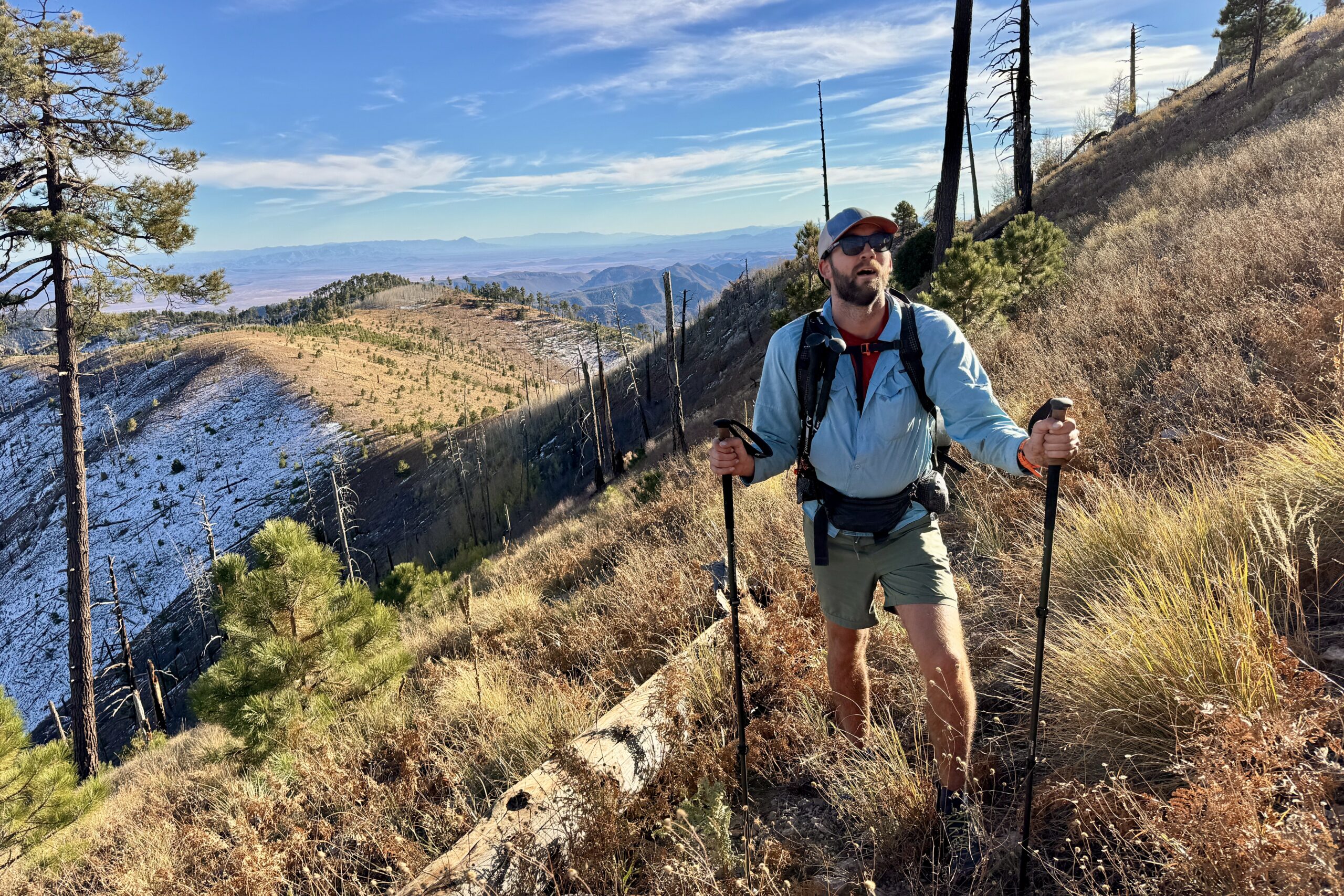
WEIGHT
The importance of weight may vary depending on the use case, but for most backpackers, every ounce counts. You’re already hauling your life on your back, so poles don’t need to add to the afternoon slumps.
The difference between the lightest and heaviest trekking poles is easily noticeable, particularly at the end of a long day. Although trekking pole weights are listed online, we weighed each model on our scale to ensure the accuracy of the listed weights.
We used a small kitchen scale to weigh each pole for our test. Because the poles are long and don’t fit well, we used a medium-sized box and zeroed it out on the scale before placing each trekking pole inside to weigh it. We weighed just one pole at a time, as many hikers prefer one pole. Those looking to compare pole weights should always ensure they know whether the listed weights refer to one or two poles and whether the straps are included in the weight.
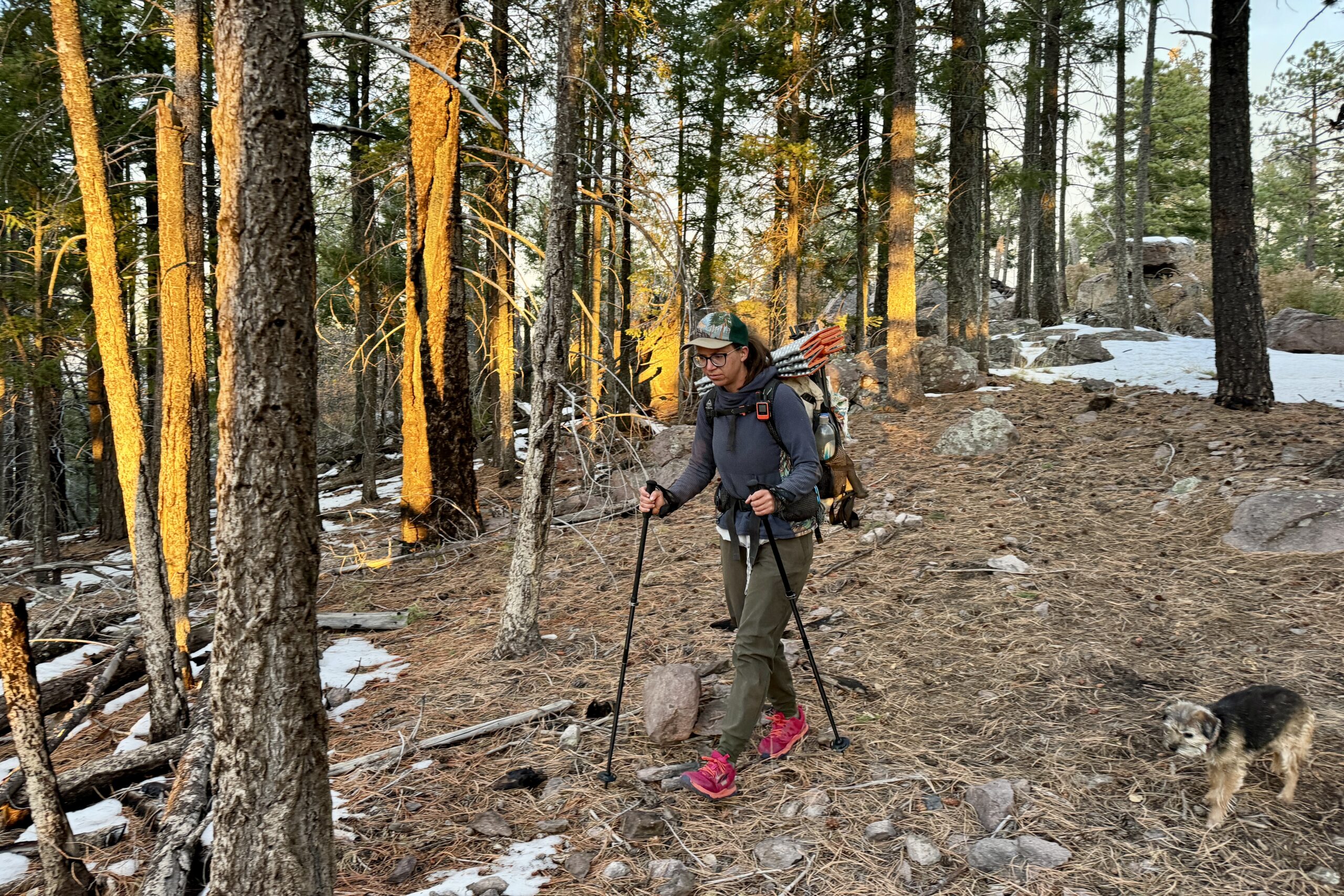
COMFORT
Cork handles quickly come to mind when choosing a pole specifically for comfort. Compared to foam, cork reduces vibrations in the hand from the pole hitting the ground. It also better absorbs sweat, limiting the amount of dirt on the handle. Aside from cork, we also examined whether each pole had padded wrist straps, the diameter of the handle, and how the handle’s shape felt in our hands.
We gave each model a point for every comfort feature it had and counted the total. Before giving each model a final ranking, we also considered design features that would negatively impact comfort, such as weirdly shaped lumps or uncomfortable wrist straps. We took points away if those were present.
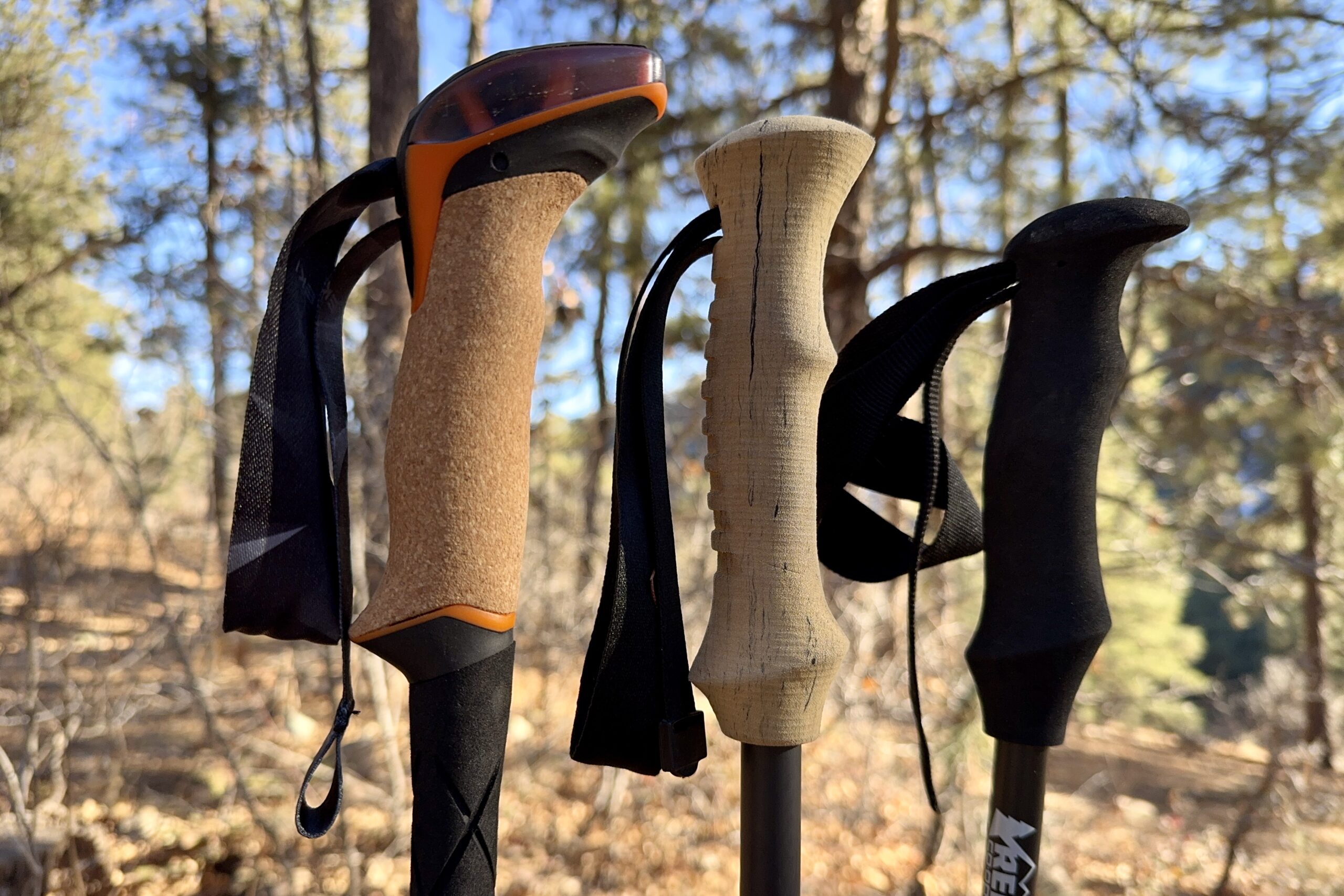
EASE OF USE
After testing many trekking poles, it is evident that some are easier to set up and use than others. The storage design, tightness of any flip locks, and materials impact how easy it is to open up the poles in the field.
To test for this, we practiced setting up each pole to the desired length a few times, then timed how long it took to switch the pole from fully collapsed to ready to use. The model with the shortest time is the easiest to use, and the pole with the longest time is the most difficult to use.
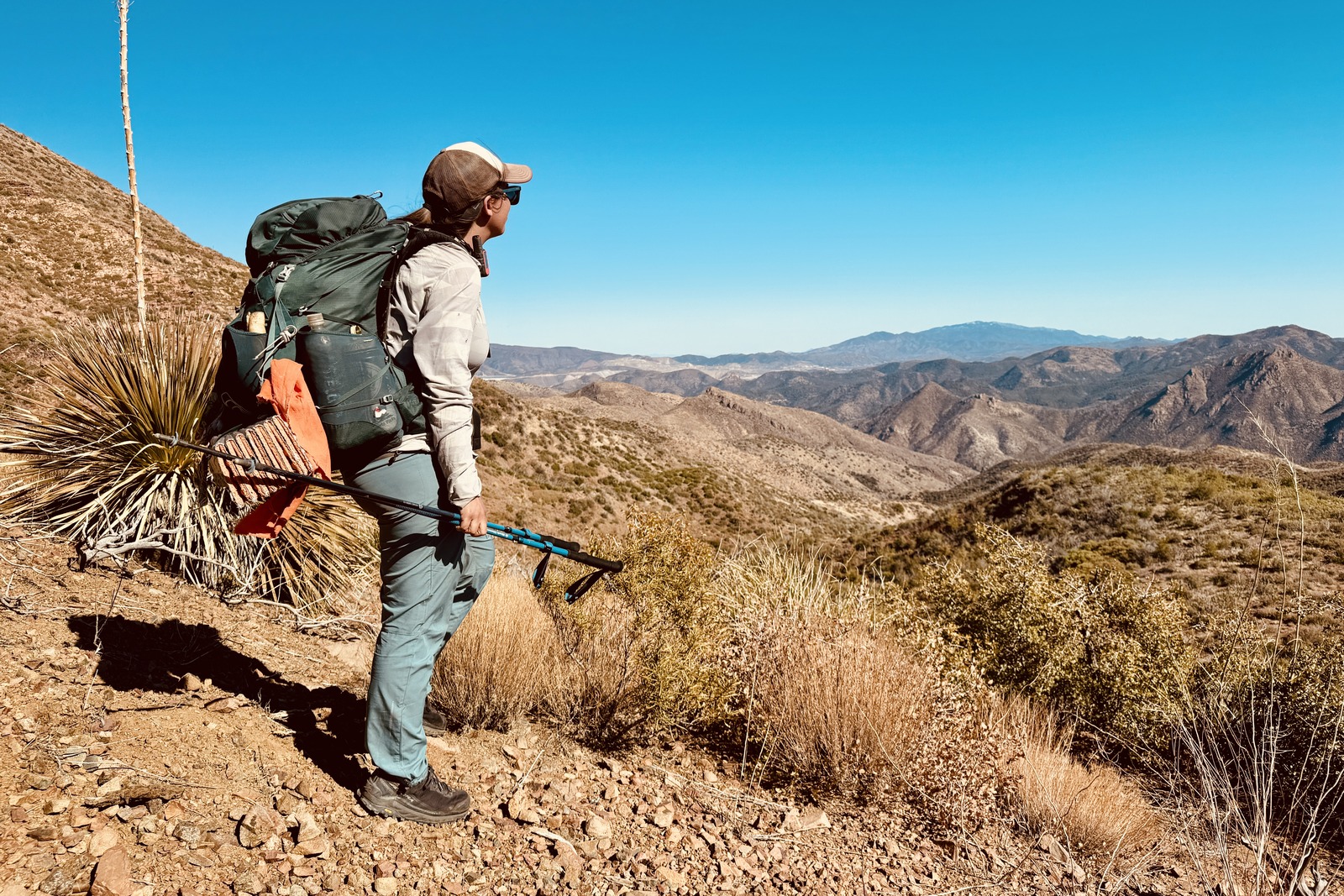
PACKABILITY
Packability is an essential quality for traveling with trekking poles or storing them. We have found this to be especially true when flying or hitchhiking. To test how small each set of poles packs down, we completely collapsed each set and measured the length from end to end.
The set of poles with the shortest length is the most packable. While we primarily focused on length, we also measured their collapsed dimensions. This measurement was only used for breaking ties.
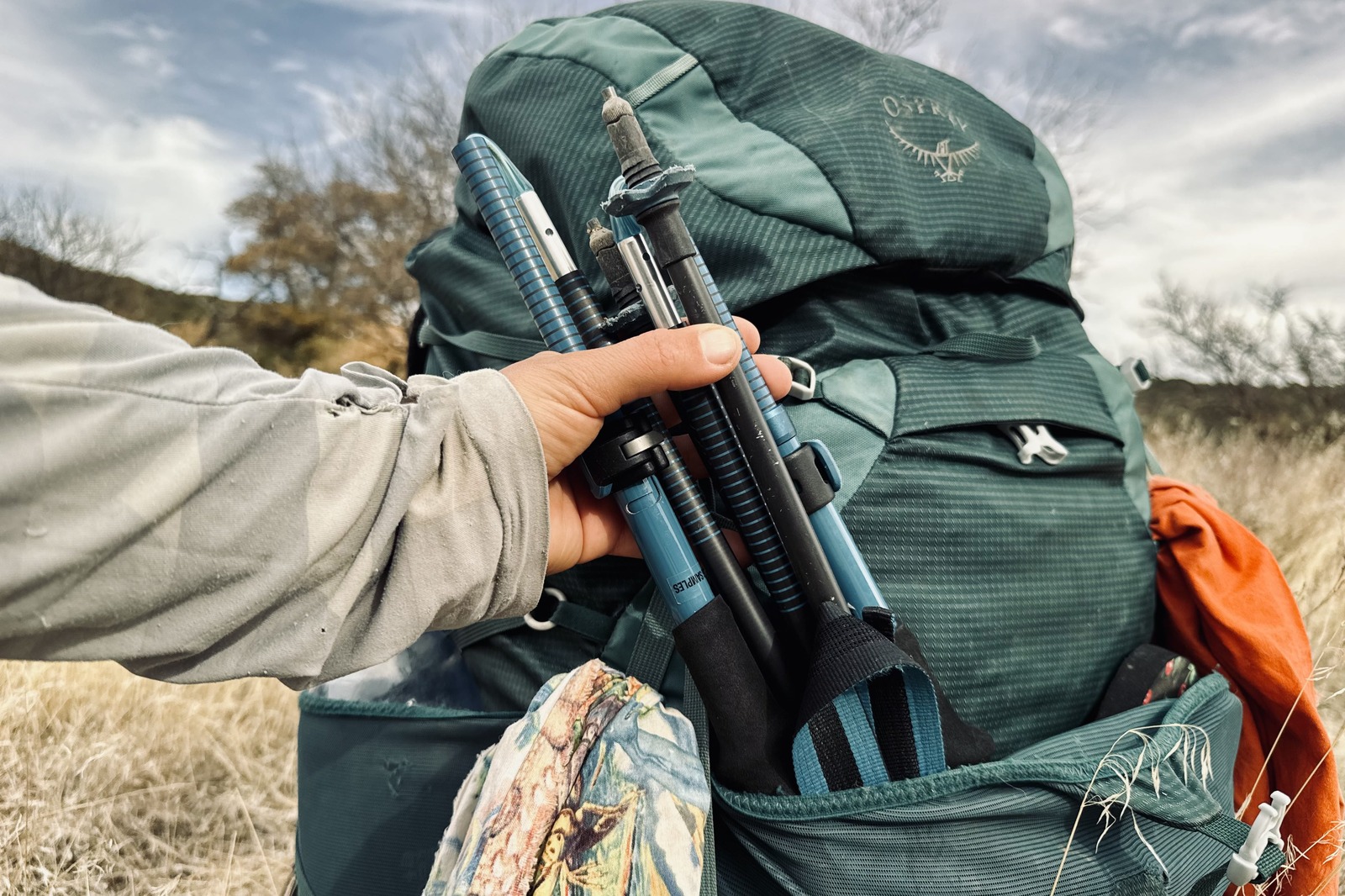
FEATURES
Different features can provide more versatility for each pair of trekking poles. We awarded points to each model for including features such as wrist straps, summer baskets, winter baskets, tip covers, the ability to replace the tip, flip lock tightness adjusters, grip extenders, and bags for storage. We awarded the model with the most features the highest ranking in this category.
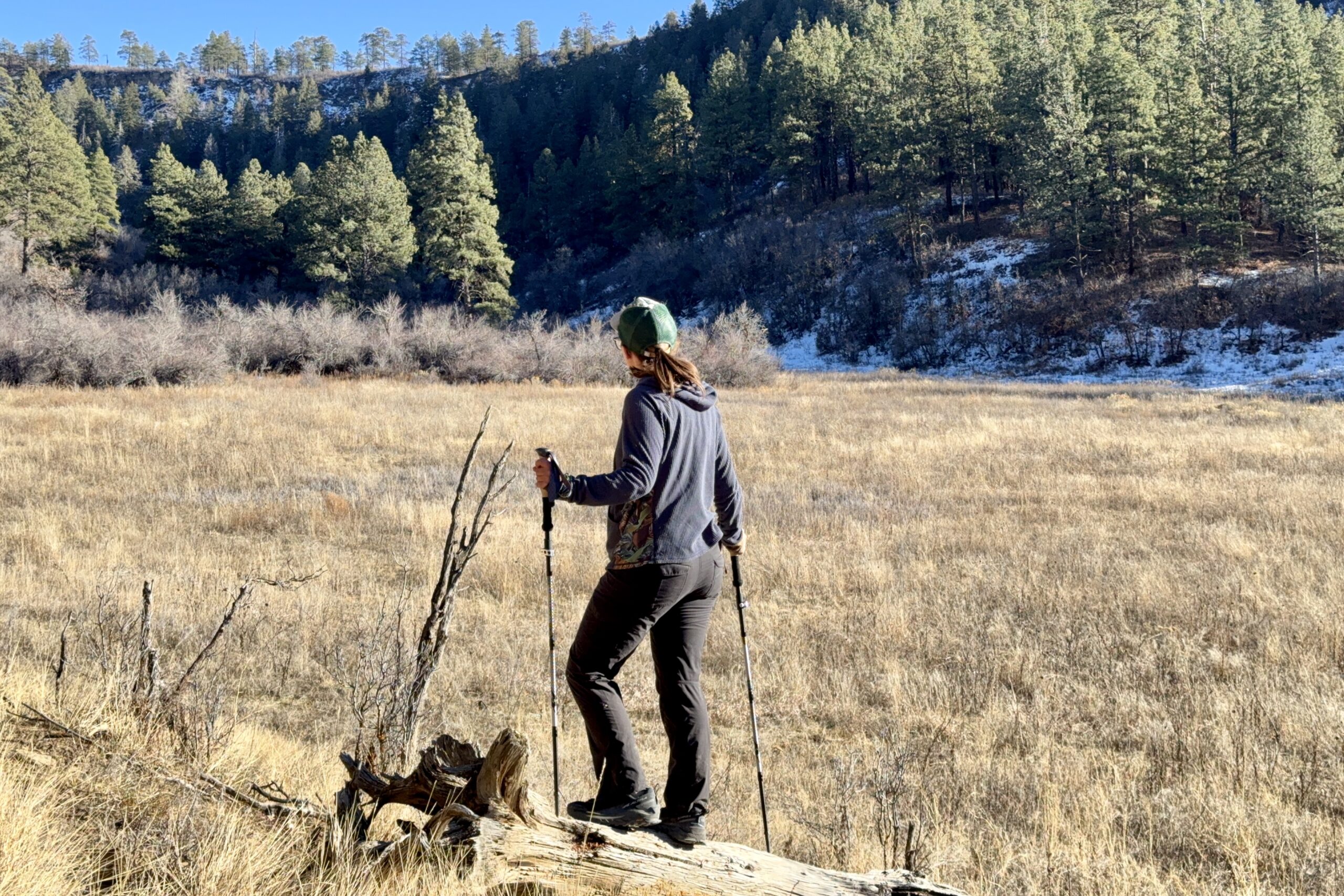
Why Trust CleverHiker
Gear analyst Bailey Bremner has spent over 600 nights and nearly 8500 miles on trails across the U.S. with various trekking poles. Many of her shelters have been trekking pole tents, and she leans on trekking poles to help her hike through rugged terrain on and off the trail. She found her trekking poles particularly useful while backpacking in Alaska and thru-hiking original routes such as the San Luis Loop, Columbine Route, and Western Wanderer Route.
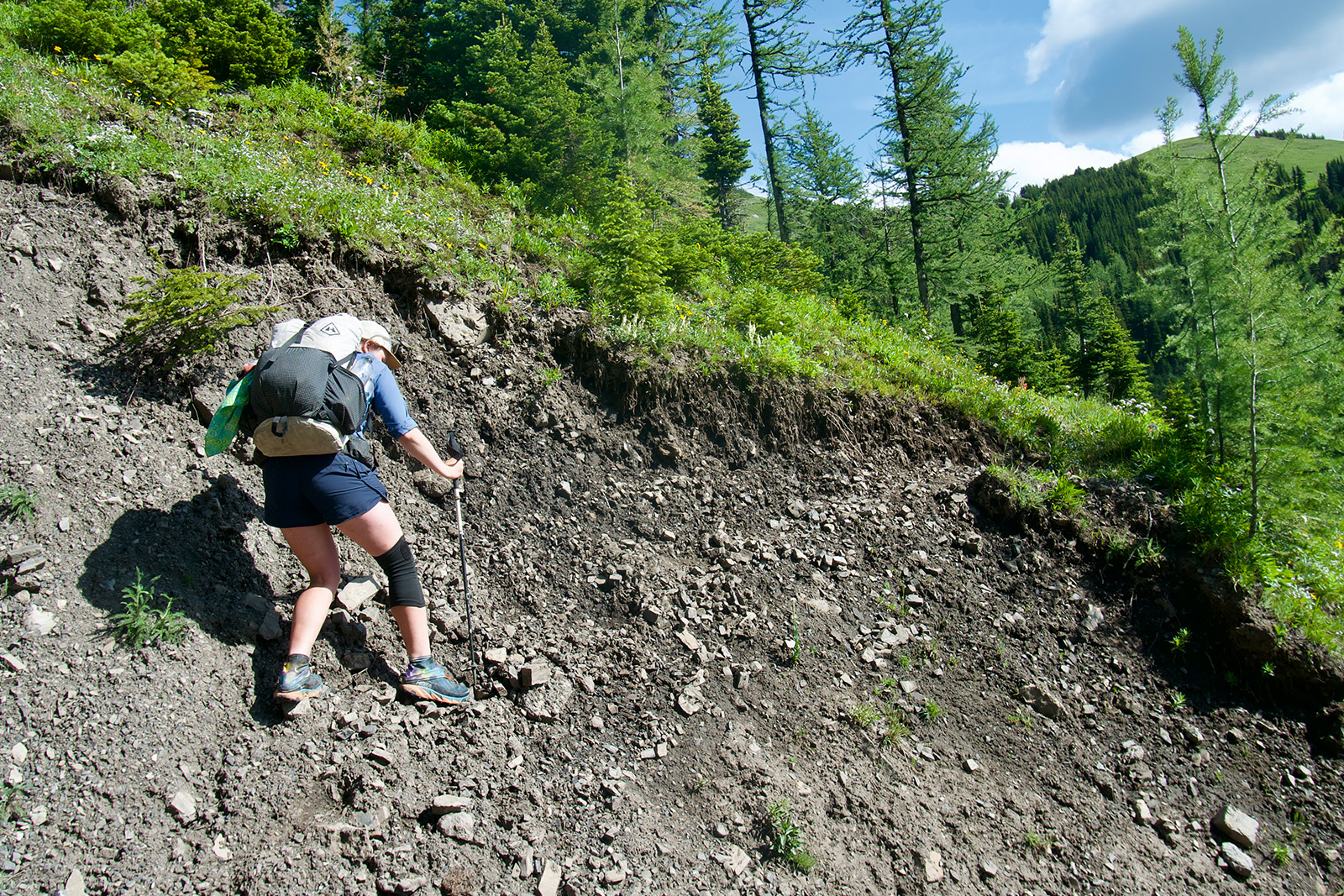
Anyalysis & Results
We rank trekking poles based on six metrics: durability, weight, comfort, ease of use, packability, and features. Our comparative results below outline the top performers in each metric.
VALUE
Value is figured by comparing the performance of a piece of gear to the price. There are a few models that provide a lot of value, such as the Trekology Trek-Z 2.0 and Black Diamond Pursuit. We like the Trek-Z poles because they are the most affordable model that we tested, but they still placed in the middle of the pack of the poles we tested.
On the other hand, the Pursuit costs more, but also is our best performer across all of our tests. The Black Diamond Trail Back, Durston Iceline, MSR Dynalock Explore, and Leki Makalu Cork Lite poles are other models that trend towards the lower right corner of our value graph. Each of these poles balances price with desirable features.
There are some poles that we tested, which performed well in our tests, but come with a substantial monetary investment. The Leki Black Series FX Carbon, Black Diamond Distance Carbon FLZ, and Black Diamond Alpine Carbon Cork all can make you wonder if you should save your money and just find a stick for free on the trail.
Alternatively, the Zpacks Minimalist is much easier on the bank, but may not last as long due to durability concerns. Balancing whether the long-term investment is worthwhile or a more affordable ultralight model is the priority will help with deciding which pole to purchase in these scenarios.
The REI Flash Carbon and Gossamer Gear LT5 had more expensive price tags given their performance in our trials. However, it is important to remember that the LT5 trekking poles are also very specialized. The cost and downsides may be worth it for users who are ultralight backpacking with them.
DURABILITY
We expected many of the results from the durability trials, but there were a few surprises too. We started by throwing each trekking pole as far as possible, like a javelin. At the end of this test portion, the only result was cosmetic damage on some poles, such as the Black Diamond Alpine Carbon Cork model. After picking up the poles, we moved on to the drop test. Again, all of the poles survived with minimal damage. The bend test was the most telling, resulting in the broadest range of results.
On one end of the spectrum, we had the Zpacks Minimalist and Gossamer Gear LT5, which both had significant bend and felt very easy to break. The Black Diamond Pursuit, Trail Back, and Alpine Carbon Cork models were more difficult to bend and felt like they would take significant force to snap them.
The other poles ranged somewhere in between, with the Durston Iceline poles being surprisingly durable, and the REI Flash Carbon unfortunately didn’t provide long-term durability confidence. We were happy to find that the newest model of the Black Diamond Distance Carbon FLZ poles seems sturdier than past models we have used.
The Leki Black Series FX Carbon, Leki Makalu Cork Lite, MSR DynaLock Explore, and Trekology Trek-Z 2.0 poles all ranked in the middle of the pack. The Black Series was a bit of a surprise given its carbon construction, and the Trek-Z poles had a fair performance given their price point.
Most importantly, all the poles we tested performed fine in the field, even in rough terrain. Since we didn’t want to destroy any poles in our testing, we had to split hairs in this category. In the end, if you take a big crash that could break a trekking pole, you probably have bigger injuries to worry about at that point.
WEIGHT
Unsurprisingly, the lightest trekking poles we tested are all made from carbon fiber. The Gossamer Gear LT5 took the top spot, closely followed by the Durston Iceline and Zpacks Minimalist. All three trekking poles are made explicitly for ultralight backpacking, so they lack some features that add weight and may cut corners in other areas to compensate.
The Black Diamond Distance Carbon FLZ are also incredibly light but are geared more towards running and have a smaller diameter to help compensate.
At the bottom of the carbon fiber models we tested, the REI Flash Carbon and Leki Black Series FX Carbon both had an average weight across all of the poles that we tested. Their performance is a bit lackluster given the tradeoff with durability.
Ranking last out of all the carbon fiber poles we tested, the Black Diamond Alpine Carbon Cork weighed 8.6 ounces per pole on our scale. Because of this, they would not be our first choice from this category for weight.
The Black Diamond Pursuit is the lightest aluminum pole in our lineup. These poles do a good job of balancing weight and performance. Following behind, the Leki Makalu Cork Lite and MSR DynaLock Explore are towards the bottom of the lineup in regards to weight, though they are in the middle of group when only considering aluminum poles.
It is not a big surprise to find that the more affordable trekking poles, such as the Trekology Trek-Z 2.0 and Black Diamond Trail Back, are the heaviest.
We found that the poles in the middle of the pack were more challenging to distinguish while hiking. The models on either extreme were noticeably lighter or heavier, even when walking during the day. Overall, the single pole weights ranged from 5.3 to 9.9 ounces.
COMFORT
We love the Black Diamond Pursuit for its exceptional comfort. They have several features that stand out from all the other trekking poles we tried, such as the thickest padding on the wrist straps and a grip shape that fits our gear tester’s hand like a glove.
The Black Diamond Alpine Cork poles are a close second, thanks to modestly padded wrist straps and cork handles that help absorb sweat.
Most other poles in our lineup are average, with either a padded wrist strap or cork handles, but not both. For example, the MSR DynaLock Explore, Black Diamond Trail Back, and REI Flash Carbon all have an average amount of padding. On the flip side, the Leki Makalu Cork Lite and Black Series FX Carbon both have cork handles rather than padding.
At the bottom of our rankings are either ultralight models, such as the GossamerGear LT5, Durston Iceline, and Black Diamond DistanceCarbon FLZ, or inexpensive, like the Trekology Trek-Z 2.0. They do not include extra comfort features in order to help save weight or minimize cost. At the bottom is the Zpacks Minimalist, which is both lightweight AND relatively inexpensive.
EASE OF USE
One advantage of the Durston Iceline’s unique design is that it is faster and easier to set up. This model was the quickest when we timed how long it took to extend a collapsed pole to hiking length. The single folding joint paired with a shaft that slides easily along the telescoping section speeds up the process.
Another model that was incredibly easy to put together was the Black Diamond Distance Carbon FLZ. The shafts were easy to lock together thanks to the inner cord and the new closure on the updated model has the perfect tension for both ease of use and security. When we timed these models, they both took about six seconds per pole to set up.
The Leki Makalu Cork Lite and Black Diamond Pursuit are also among our favorites due to their well-designed flick-lock shapes and shafts, which do not stick when expanded.
Poles with a distinctly average performance that was not very noteworthy include the Leki Black Series FX Carbon, MSR DynaLock Explore, and Zpacks Minimalist poles. The Explore poles could be a bit sticky in the bottom shaft, but still fairly fast to set up.
Both the Black Diamond Alpine Carbon Cork and Trail Back models took longer to use, but were not necessarily frustrating to use.
Some notably complex trekking poles to use are the REI Flash Carbon, Trekology Trek-Z 2.0, and Gossamer Gear LT5 poles. The Flash Carbon pole shafts have a lot of friction, making them challenging to expand and collapse (particularly the lowest shaft).
We also found the Trek-Z poles to be irritating to set up. The shaft pieces on these poles do not fit together readily, and it is difficult to get them in place while simultaneously increasing the tension of the inner cord.
We have always found twist-lock poles time-consuming to set up, which is also our experience with the LT5 poles.
PACKABILITY
Trekking poles with a folding design tend to be more compact than telescoping models. After measuring the collapsed length of each pole in our lineup, we found that the Black Diamond Distance Carbon FLZ and Trekology Trek-Z 2.0 models were easily the most compact trekking poles.
The Leki Black Series FX Carbon poles are not too far behind. The Durston Iceline poles have a hybrid design and fall in between the folding and telescoping trekking poles for packability.
The smallest collapsed telescoping pole we tested is the Black Diamond Pursuit, measuring 23 inches in length. This pole is noticeably shorter than the other telescoping models. The Gossamer Gear LT5 has a respectable packed length for a telescoping model and isn’t too much longer than the Pursuit.
The MSR DynaLock Explore, REI Flash Carbon, Zpacks Minimalist, and Black Diamond Alpine Carbon Cork all progressively get longer due to longer shafts. It is worth noting that the Black Diamond Trail Back and Leki Makalu Cork Lite have the longest collapsed length.
Every pole measured true to the specification listed on the manufacturer’s website. In the field, we found that the shortest trekking poles were significantly easier to travel with due to being easier to store in our packs and stow away while driving.
FEATURES
The Trekology Trek-Z 2.0 trekking poles have the most features, which means they have a lot of versatility. Specifically, these poles include the basics, such as wrist straps and summer and winter baskets, several tip covers, and a grip extension. Most of the folding-style models came with a storage bag or, at the very least, a small velcro strap.
Our overall top performer, the Black Diamond Pursuit, also did well in the features category. They include great winter baskets that we used while skiing and a small tension adjuster hidden inside the lower pole shaft. Both the MSR DynaLock Explore and Leki Black Series FX Carbon offered a similar amount of versatility to the Pursuit due to their own combination of features.
Poles that scored in the average range were generally more affordable or ultralight models such as the Black Diamond Trail Back, Gossamer Gear LT5, Black Diamond Distance Carbon FLZ, and Zpacks Minimalist. We were surprised that the Leki Makalu Cork Lite also ended up in this group. Given the price point and weight, it would have been nice to see at least one or two more features offered such as a second set of baskets or tip covers. The Black Diamond Alpine Carbon Cork was another surprise towards the bottom of the list for similar reasons as the Cork Lite.
The REI Flash Carbon and Durston Iceline poles performed at the bottom. This is more acceptable for the Durston trekking poles. They are lighter and have fewer features to cut weight. Surprisingly, the Flash Carbon poles do not have replaceable carbide tips or a grip extension.

How to Choose Trekking Poles
MATERIALS
Carbon fiber and aluminum are the two materials that make up the majority of trekking poles. Carbon fiber is an excellent choice for those who prioritize weight, but it is typically not as durable. This material does not bend, so a large amount of weight will cause the pole to snap.
Aluminum poles tend to weigh more than carbon fiber but have better durability. They have more give and will bend some before breaking. Some poles have shafts made up of both materials in different sections for those looking for the best of both.
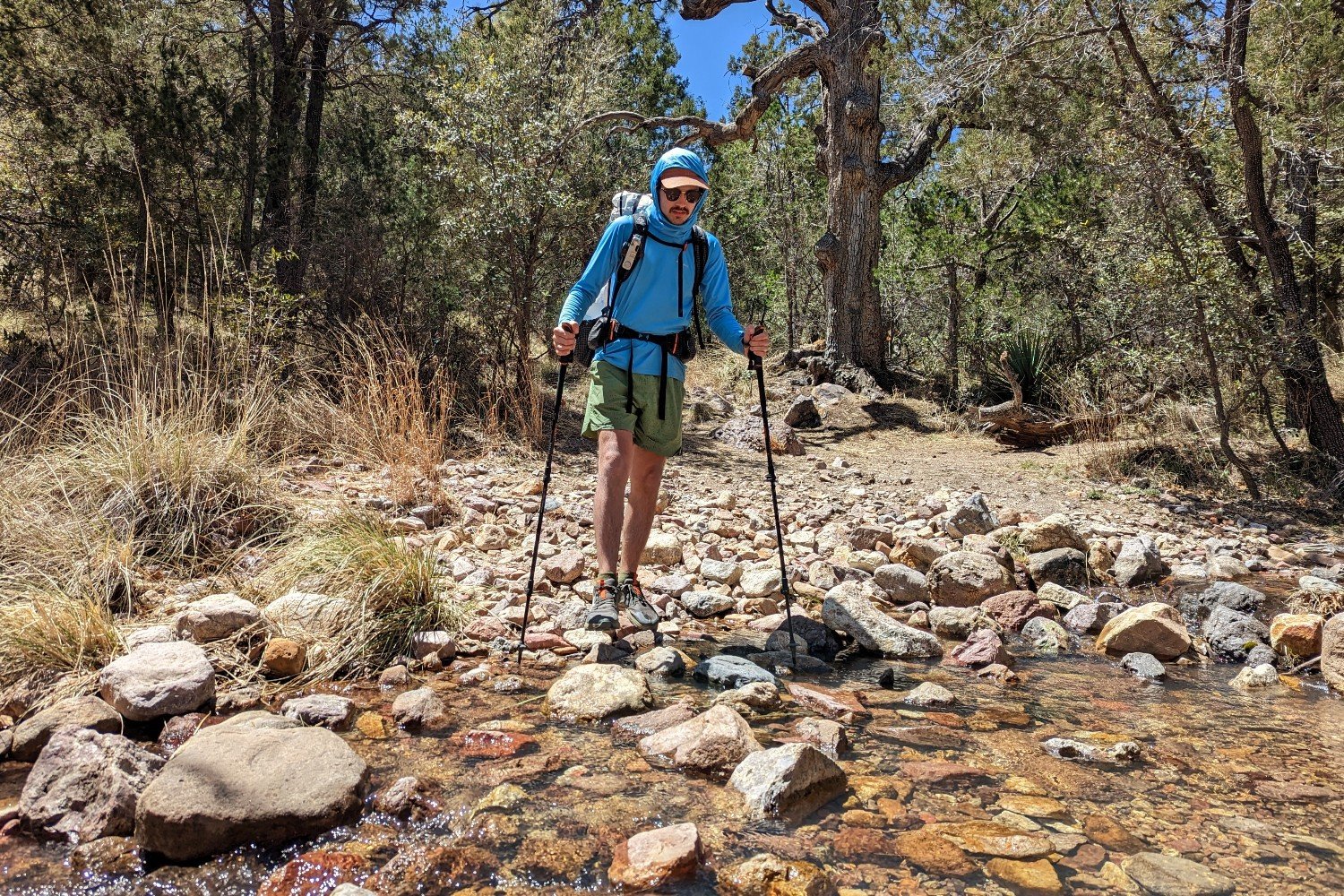
PRICE
Poles can get spendy! Some price tags reflect more value, comfort, and versatility. Usually, cork handles and carbon fiber shafts are the culprits for a high price tag.
Sometimes, spending a little bit more for a set of poles that will last a long time might be worth it, as the cost will be more economical in the long run. There is nothing wrong with choosing a cheap pair of poles; however, they may come with some tradeoffs in terms of weight, durability, and packability.
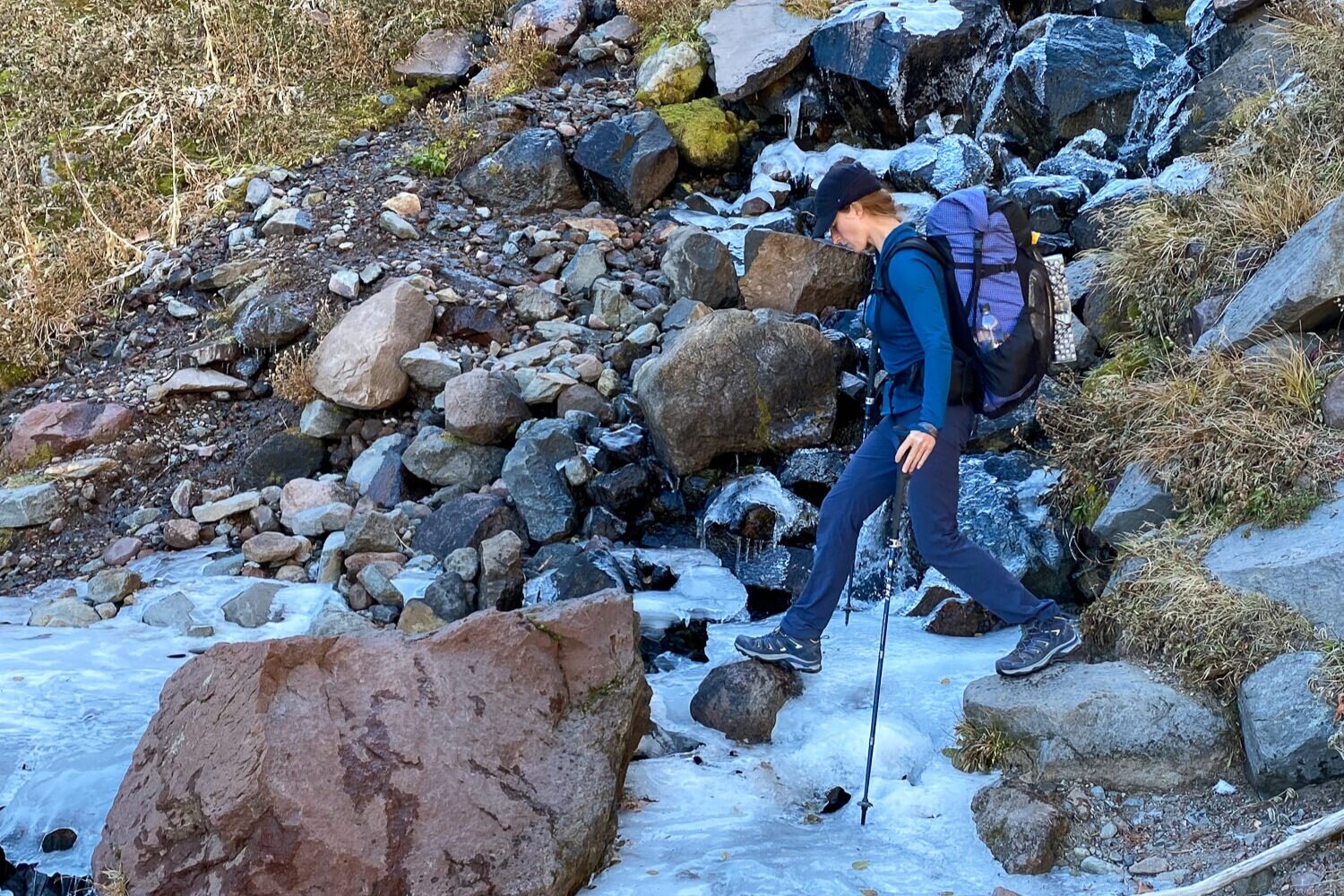
WEIGHT
Even though trekking poles are not typically counted towards a backpack’s base weight, the ounces still add up when your arms are doing thousands of lifts throughout a trip.
Weight becomes more of a consideration if trails require you to stash them on your pack. For day hikers or use in winter, a heavier/more sturdy pole may be a better option.

DURABILITY
The more challenging the terrain, the more critical durability is. When crossing streams, snowfields, or bushwhacking off trail, the pole is more likely to come under high stress. This is where aluminum really shines over carbon fiber: it will bend to take the impact of a sudden fall or quick change in direction.
Cheap poles will bend and it can be a big bummer. Sometimes they won’t telescope and nest in the larger shaft or slide into their adjacent pole if it deforms enough.

POLE DESIGN
Telescoping
The most common style of trekking pole, telescoping poles, consists of two to three poles nested together. A locking mechanism keeps them in place when packed down or extended, allowing for incredible flexibility when choosing the pole’s length.
Folding
This style folds down very small, is lightweight, and has thinner shafts, making them great for activities where they are stowed away frequently, such as trail running. Most have a fixed length, but some include a telescoping section to increase adjustability.
Fixed
Fixed poles, mostly used by downhill skiers, do not have any built-in adjustability. Instead, they consist of one long pole that cannot be broken down or collapsed. These poles are not typically well suited for hiking or backpacking, as better options are available that are easier to stow away.

LOCKING SYSTEMS
The two most common locking systems are flick and twist locks. Flick locks feature an external locking mechanism that can be easily adjusted for optimal use.
Twist locks have an internal system with a small bracket that expands when activated. Flick locks are more reliable and adjustable, whereas twist locks are more streamlined but take longer to set up.
GRIPS
Grip material can significantly impact comfort, blisters, cleanliness, weight, and durability. We recommend choosing a cork grip for its comfortable hold, ability to minimize dirty hands, and durability. If weight or price is a bigger priority, foam might be the way to go.
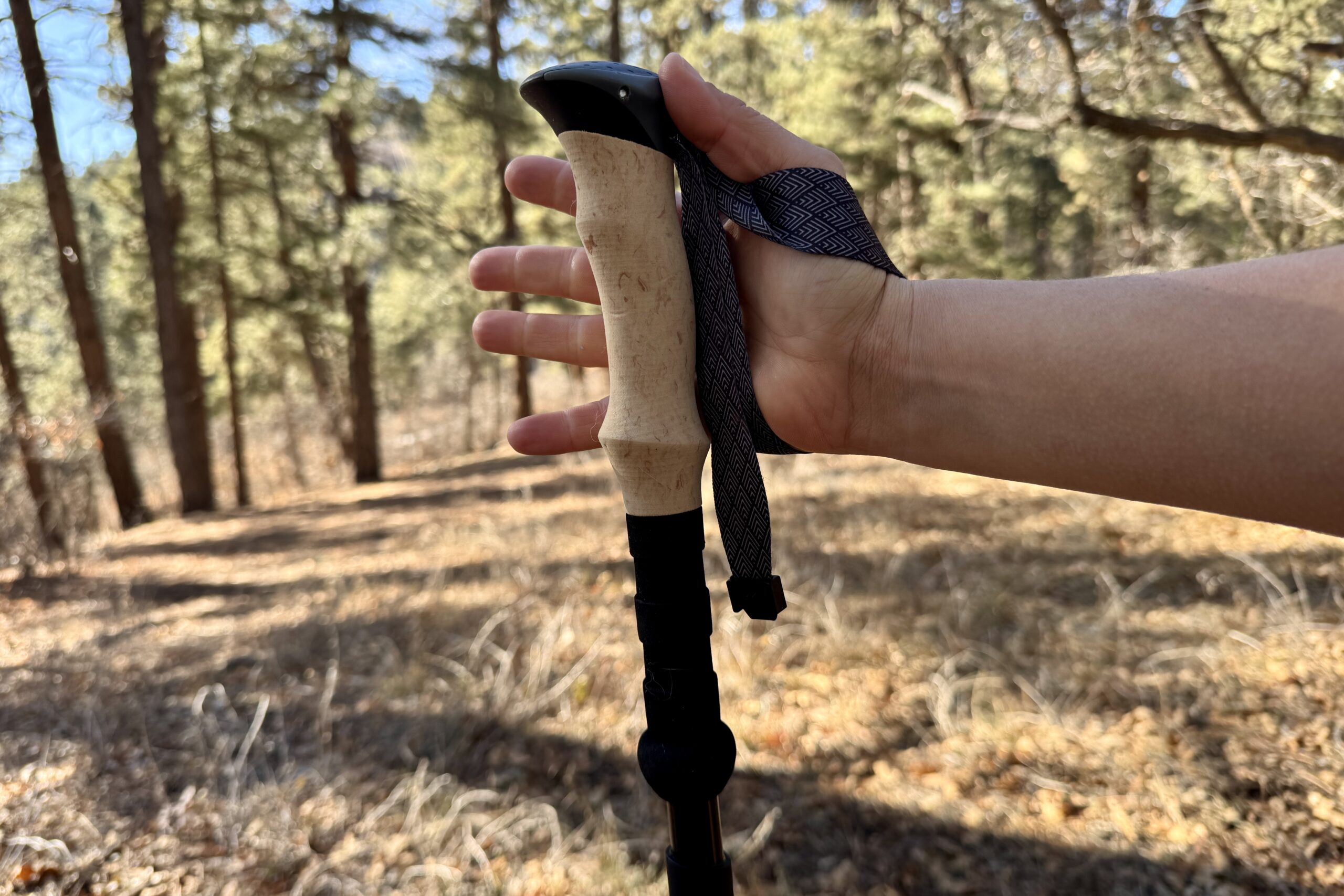
STRAPS
Straps can help increase stability and prevent the pole from being lost if it is dropped on a slope. They also help relieve hand fatigue from all the gripping.
The most efficient way to use the wrist straps is to place the hand through the strap from below and then grab the pole. Some poles have thicker padding on the wrist straps to avoid chaffing or discomfort. Others are no-frills affairs with rudimentary webbing, but these don’t usually feel very good at the end of a long day. Most poles also feature a cinch system to adjust the strap length.
BASKETS
Round, plastic baskets at the end of the pole are a great feature to prevent plunging them into snow, mud, or sand. Most poles include at least one small summer basket, and some include a second, larger basket for winter use. Poles typically have threading just above the tip, making it relatively easy to replace or exchange the baskets.
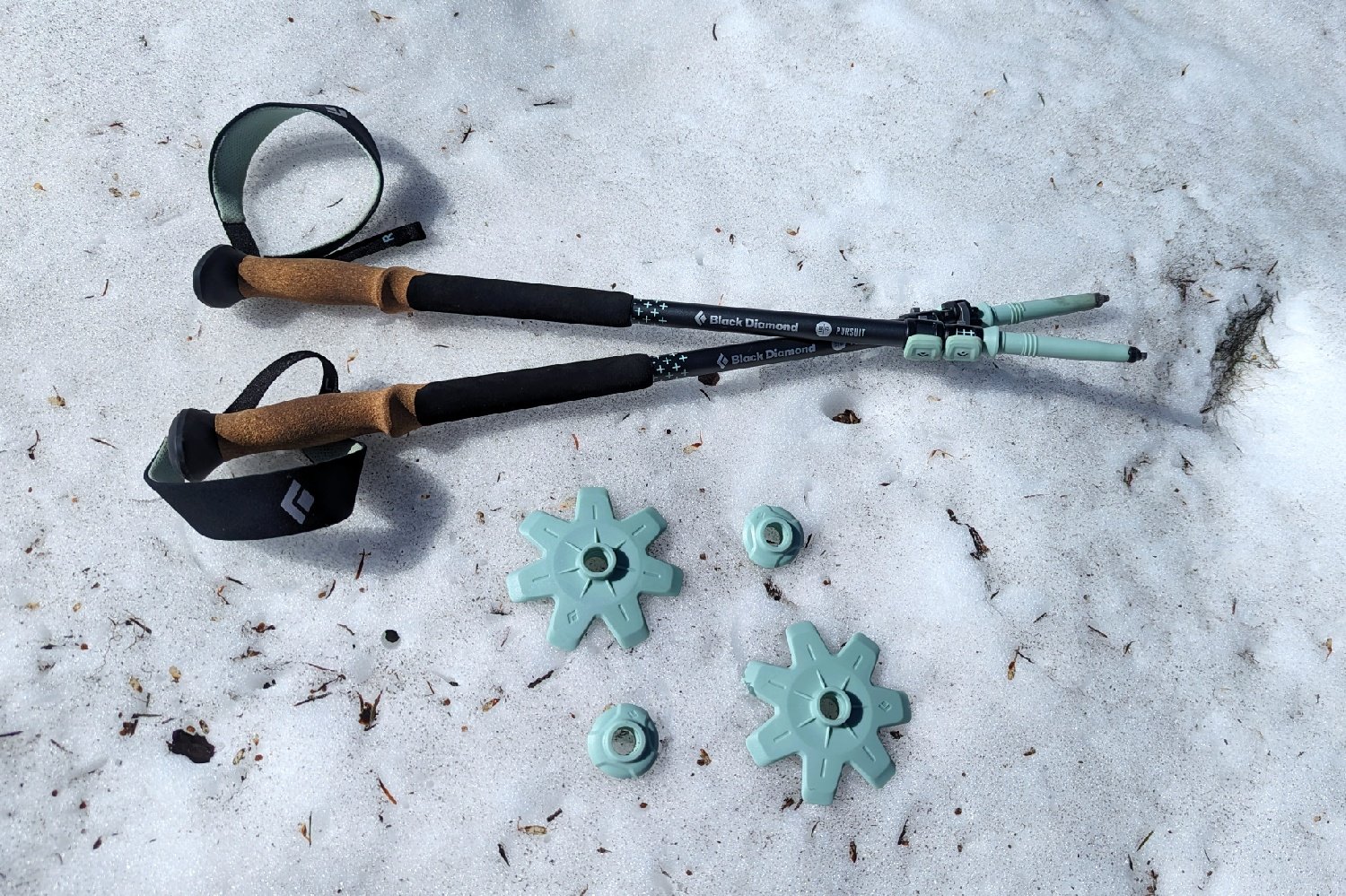
TIPS
Pole tips typically consist of a plastic body that holds a carbide tip, enhancing stability and traction. This tip is durable but can wear down over time as it comes into contact with rocks. Fortunately, they can usually be replaced by pulling out either the carbide tip or the entire plastic body and inserting a new tip from the manufacturer.
SHOCK ABSORBERS
Shock absorbers are small, spring-like mechanisms near the pole’s tip that help absorb some of the impact of striking the ground. Shock absorbers are a personal preference, though we tend to avoid them. For one, the moving internal parts can be prone to breaking down and challenging to fix. They also reduce some of the stability benefits of poles in rugged terrain and can become squeaky, which is annoying at the end of a long day.
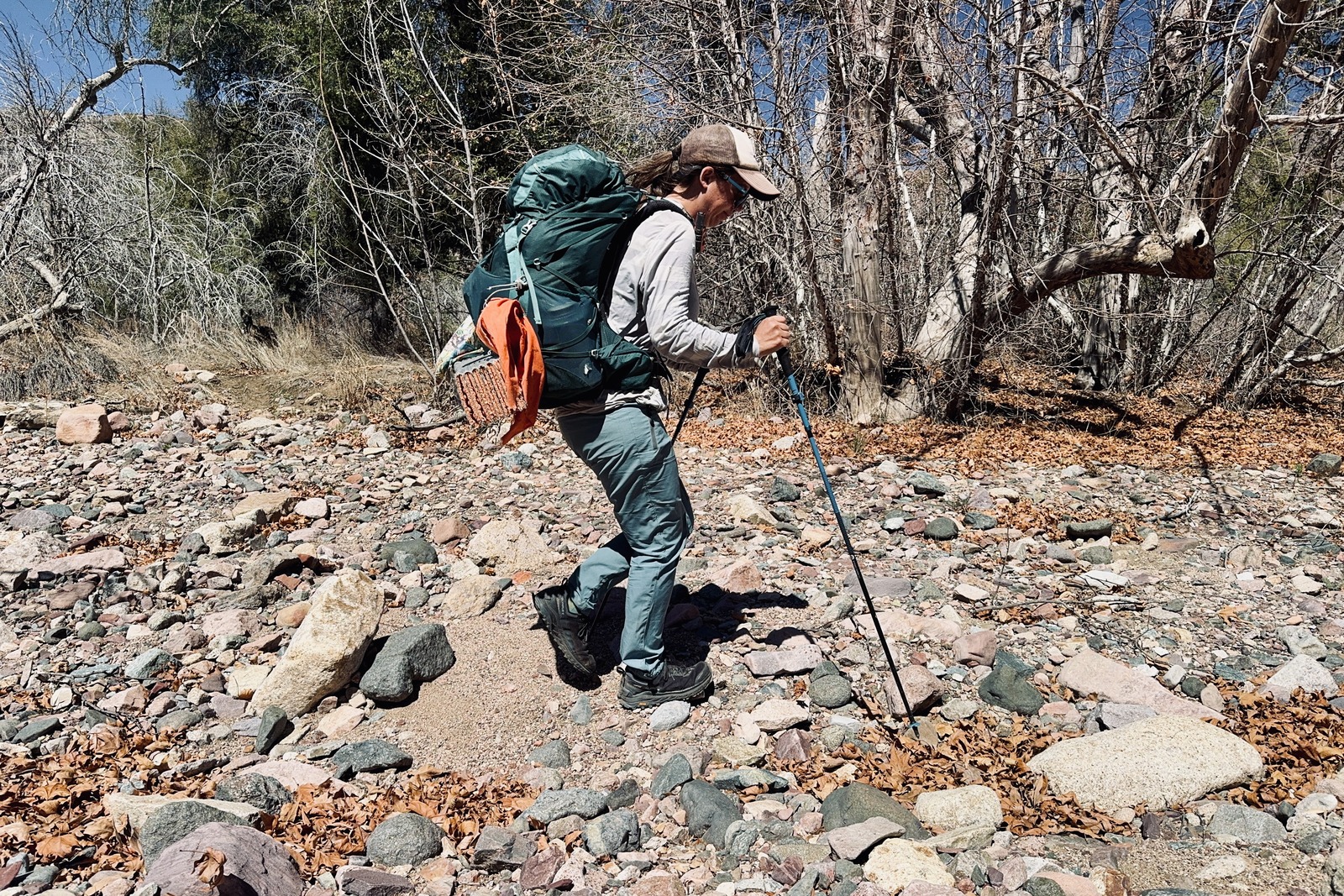
ADJUSTMENTS
Regardless of the pole design, the arm should be bent at 90° while holding the poles vertically when standing still on flat ground. This helps reduce the chance of injury and maximizes efficiency. Shortening the poles 5 to 10 cm when hiking uphill may help provide better traction and planting. On descents, lengthening the poles can increase stability and footing.
GENDER SPECIFIC POLES
While there are a few gender-specific poles on the market, most of the difference is in color options and pole length. The majority of trekking poles are unisex, and our recommendation is to choose the pole that feels best on the trail.
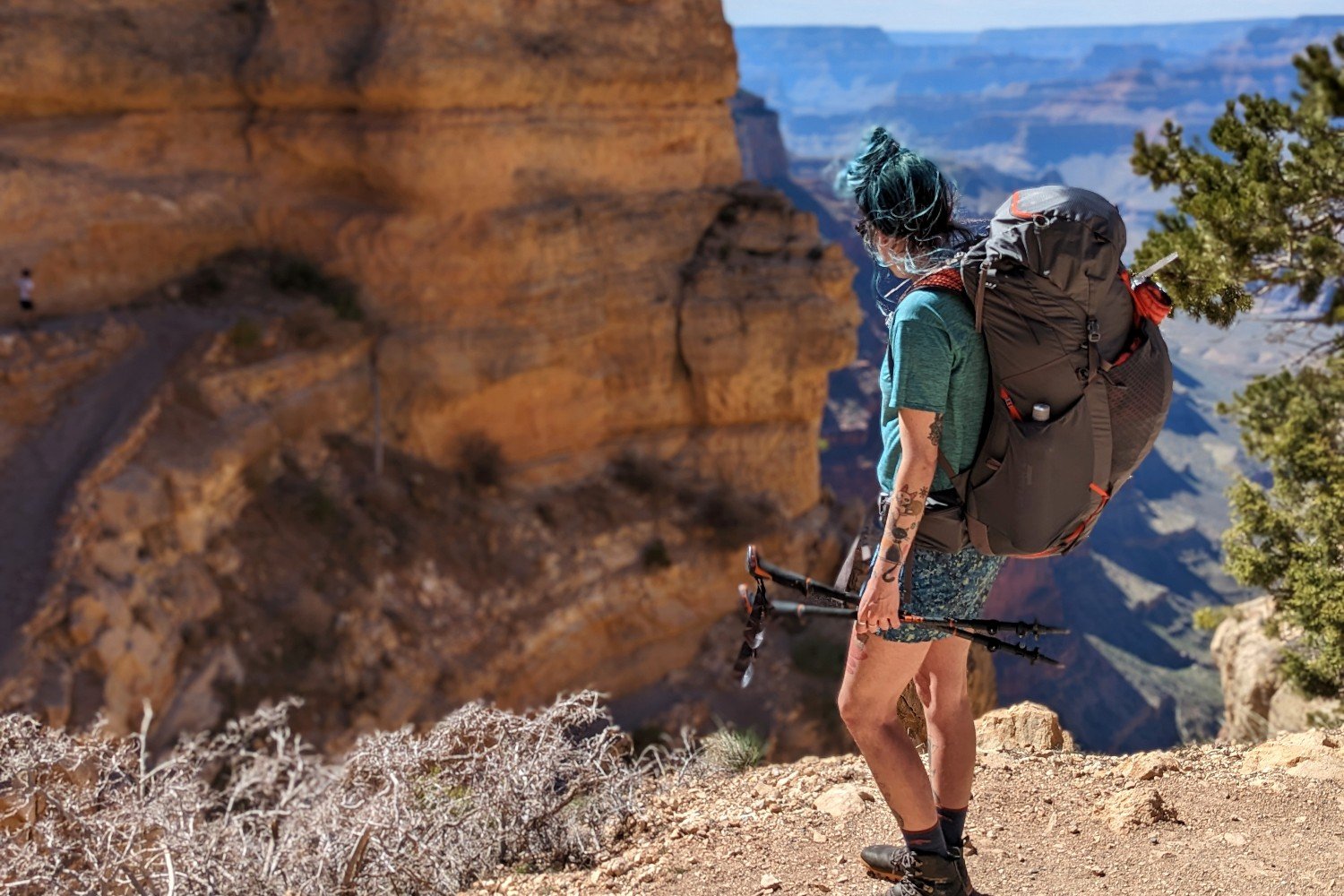
Conclusion
There is a wide variety of trekking poles on the market. Some are designed to save as much weight as possible, others take a well-rounded approach, and still others focus on providing the most competitive price. We hope this guide has provided you with all the information needed to choose the best trekking pole for your needs.
